Can you name the first-ever iPhone? In what year did the iPhone’s first model go on sale? We’ve got it all right here from the first iPhone through the iPhone 13. Apple has released 33 iPhones since 2007. Isn’t that crazy? Below is a list of all the iPhones in the order they were first released.
We’ll walk you through the complete history of iPhone models over time, and we’ll highlight the most noteworthy developments that have occurred.
iPhones in Order
Before diving into the complete list of iPhones in order of their release date, check out the comprehensive table to find the release date.
| Apple iPhone Model | Release Date |
|---|---|
| iPhone | June 29, 2007 |
| iPhone 3G | June 9, 2008 |
| iPhone 3Gs | June 19, 2009 |
| iPhone 4 | June 24, 2010 |
| iPhone 4s | October 14, 2011 |
| iPhone 5 | September 21, 2012 |
| iPhone 5s | September 20, 2013 |
| iPhone 5c | September 20, 2013 |
| iPhone 6 & iPhone 6 Plus | September 25, 2014 |
| iPhone 6s & 6s Plus | September 25, 2015 |
| iPhone SE | March 31, 2016 |
| iPhone 7 & 7 Plus | September 25, 2016 |
| iPhone 8 & 8 Plus | September 22, 2017 |
| iPhone X | November 3, 2017 |
| iPhone XS/iPhone XS Max | September 21, 2018 |
| iPhone XR | October 26, 2018 |
| iPhone 11/iPhone 11 Pro/iPhone 11 Pro Max | September 20, 2019 |
| iPhone SE (2020) | April 24, 2020 |
| iPhone 12 | October 23, 2020 |
| iPhone 12 Mini/iPhone 12 Pro/iPhone 12 Pro Max – | November 13, 2020 |
| iPhone 13/iPhone 13 Mini/iPhone 13 Pro/iPhone 13 Pro Max | September 24, 2021 |
As you can gauge from the list of iPhone release dates above, Apple favors a September to November release schedule since it’s shortly before the Christmas shopping season.
Tracking Apple’s iPhone Journey
These past 12 years have seen the iPhone go from the plastic, low-memory iPhone 3G to the massively powerful iPhone 13, which could outperform most laptops in terms of performance and computing power in 2021. Apple has entirely revamped and redefined the iPhone over this period.
The iPhone has gone through many “generations” over the years, from 3.5-inches to 6-inches. The conventional home button continued unabated since Apple released the original iPhone, and it stayed in place until Apple released the iPhone 5s, which introduced TouchID, which is Apple’s biometric reader.
All iPhone Models Released Through Years (Oldest To Newest)
Let’s look at the features and specs of all the iPhones in order.
The iPhone
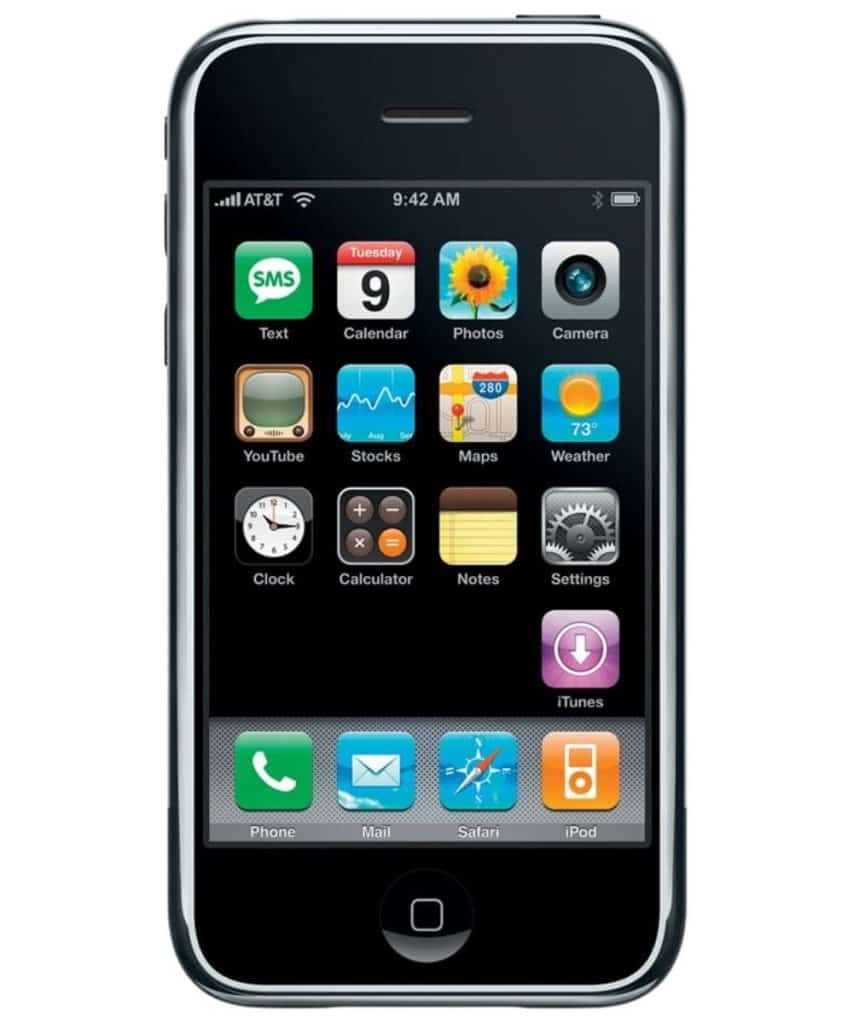
In 2007, Apple released the first iPhone. When it debuted in 2007, the media widely panned it since it was Apple’s first smartphone. The iPhone 2G was a tiny, quad-band GSM smartphone with GPRS and EDGE often referred to as the iPhone 2G. Tons of people waited outside Apple Stores when Steve Jobs announced the iPhone’s $499 entry-level edition.
Despite being a precursor for future iterations, the iPhone 2G changed the public’s perception of what a smartphone should look like. With a full-fledged touchscreen and no keypad, the iPhone revolutionized the way people communicated with each other.
Apple iPhone (2007) Specs:
- 3.5-inches (320 x 480 pixels) display
- 2MP rear camera (no front camera)
- Samsung 32-bit, 412 MHz processor with 128 MB RAM
- Bluetooth 2.0
- iOS 1.0, upgradable to iOS 3.3
- Wi-Fi: 802.11b/g
- 128MB RAM, 4GB internal storage ($499) or 8GB ($599)
iPhone 3G
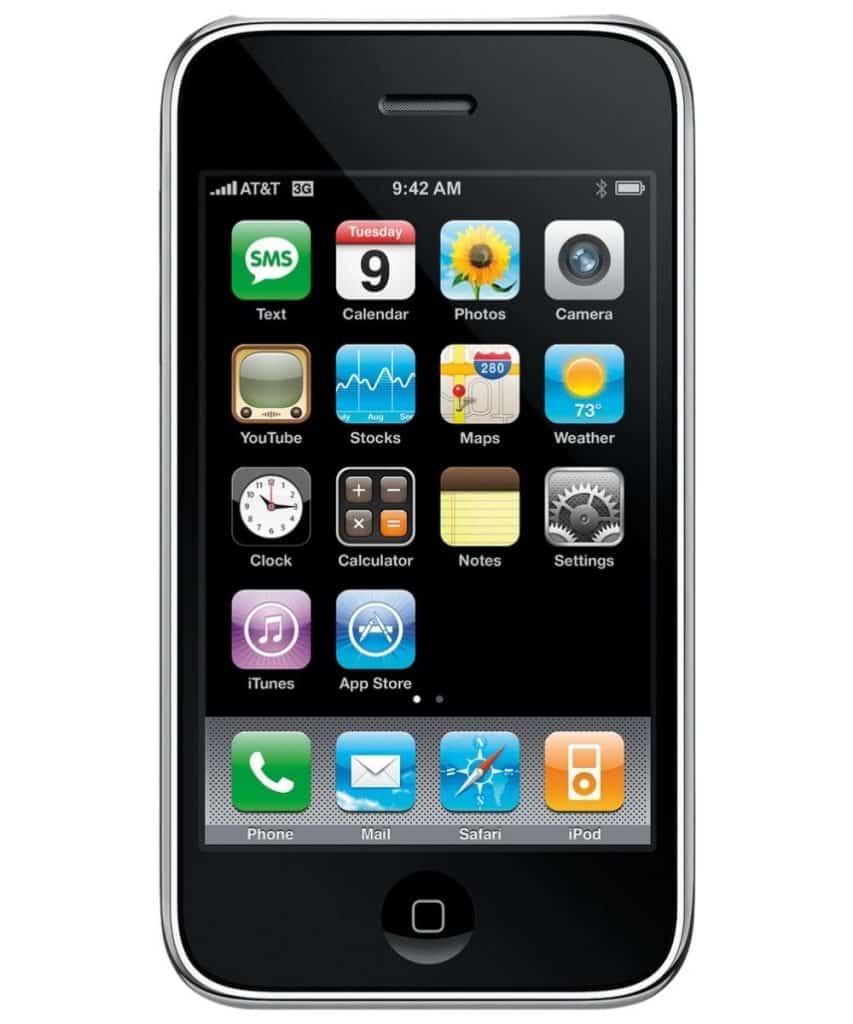
The iPhone 3G’s internal specifications were similar to those of the original iPhone. However, there was now an App Store to download apps from! This iPhone was given its name because of its 3G connectivity support, making it possible to use the internet without feeling like you wanted to throw the phone out the window.
The 3G technology was a big leap over 2G and really contributed towards making this iPhone model successful.
Apple iPhone 3G (2008) Specs
- 3.5-inches (320 x 480 pixels) display
- 2MP rear camera (no front camera)
- ARM 11 412 MHz SoC with 128 MB RAM
- Bluetooth 2.0
- iOS 2.0, upgradable to iOS 4.0
- Wi-Fi: 802.11b/g
- 8GB internal storage ($199) or 16GB ($299)
iPhone 3Gs
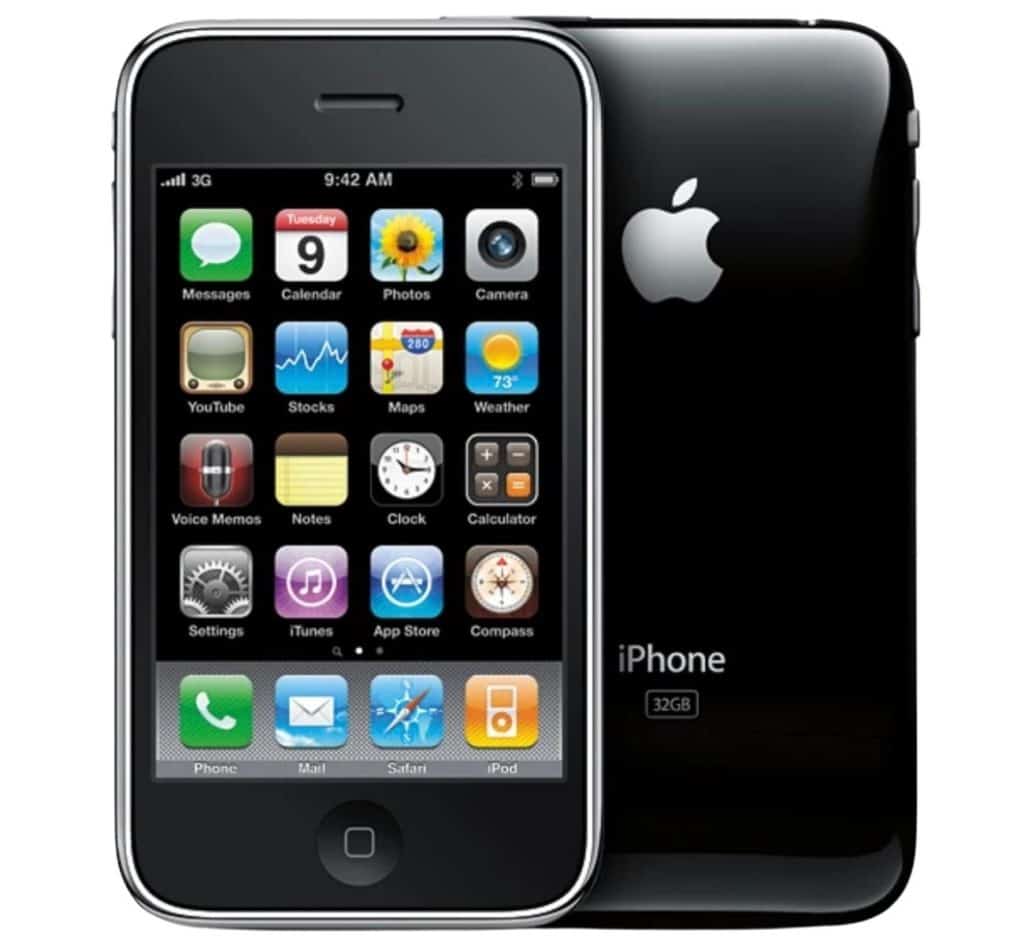
With the iPhone 3GS, Apple doubled the available storage space to 32 GB from the original iPhone’s 16 GB. The introduction of the App Store was a game-changer. With all of the photographs, music, and apps that users needed, 16GB just wasn’t enough. The camera’s resolution increased from 2MP to 3MP and added video recording. Unfortunately, Siri wouldn’t arrive for yet another handful of years after Apple implemented Voice Control.
Apple iPhone 3GS (2009) Specs
- 3.5-inches (320 x 480 pixels) display
- 3MP rear camera, 480p video recording
- 600 MHz Cortex-A8 SoC with 256MB RAM
- Bluetooth 2.1
- iOS 3.0, upgradable to iOS 6.0
- Wi-Fi: 802.11b/g
- 16GB internal storage ($199) or 32GB ($299)
iPhone 4
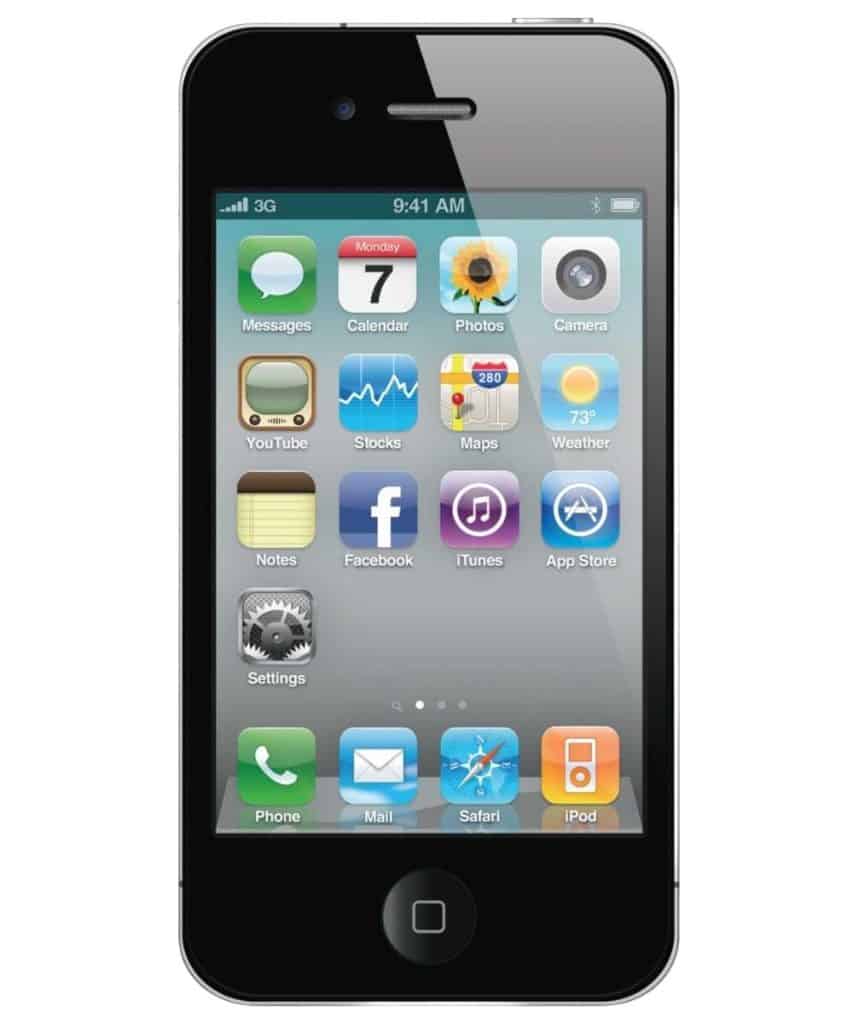
We’re finally making progress. The first-ever iPhone with a front camera was the iPhone 4. Apple had no idea that selfies would become a worldwide phenomenon. The iPhone 4 also added Retina display. It had more prowess than the iPhone 3GS. However, 32 GB remained the iPhone’s maximum storage capacity, making the technology slightly redundant.
Apple iPhone 4 (2010) Specs
- 3.5-inches (640 x 960 pixels) display
- 5MP rear camera, 720p video recording
- 0.3MP front camera, 480p video recording
- 1.0 GHz Cortex-A8 SoC with 512MB RAM
- Bluetooth 2.1
- iOS 4.0, upgradable to iOS 7.0
- Wi-Fi: 802.11b/g/n (2.4 GHz only)
- 16GB internal storage ($199) or 32GB ($299)
iPhone 4s
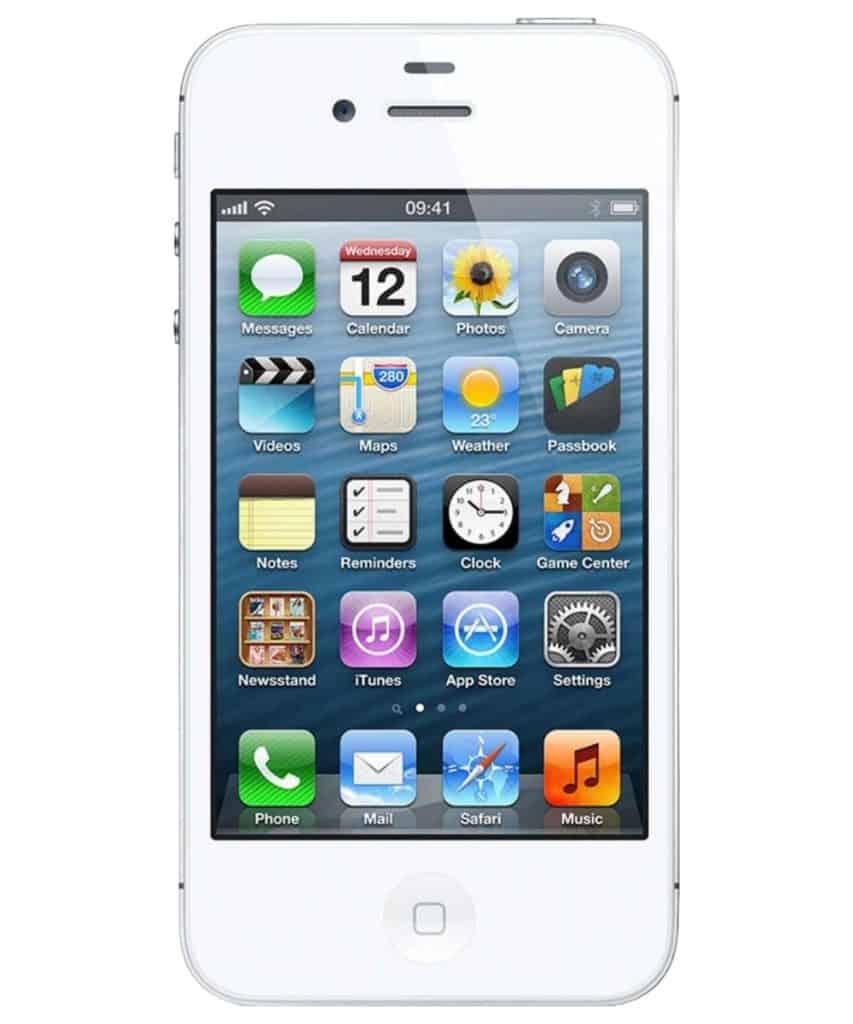
The camera on the iPhone 4s went from 5MP to a staggering 8MP, making it a massive improvement over the previous model. That’s a significant jump. When it came to RAM, Apple didn’t change a thing while adding 64GB of storage, but 1080p video was introduced. Oh, Siri, we can’t overlook it! In the first week, iPhone 4S sales surpassed 4 million units.
Apple iPhone 4s (2011) Specs
- 3.5-inches (640 x 960 pixels) display
- 8MP rear camera, 1080p video recording
- 0.3MP front camera, 480p video recording
- Dual-core 1.0 GHz Cortex-A9 SoC with 512MB RAM
- Bluetooth 4.0
- iOS 5.0, upgradable to iOS 9.0
- Wi-Fi: 802.11b/g/n (2.4 GHz only)
- 16GB internal storage ($199) or 32GB ($299), 64GB ($399)
Also Read: Android Vs iOS Pros And Cons
iPhone 5
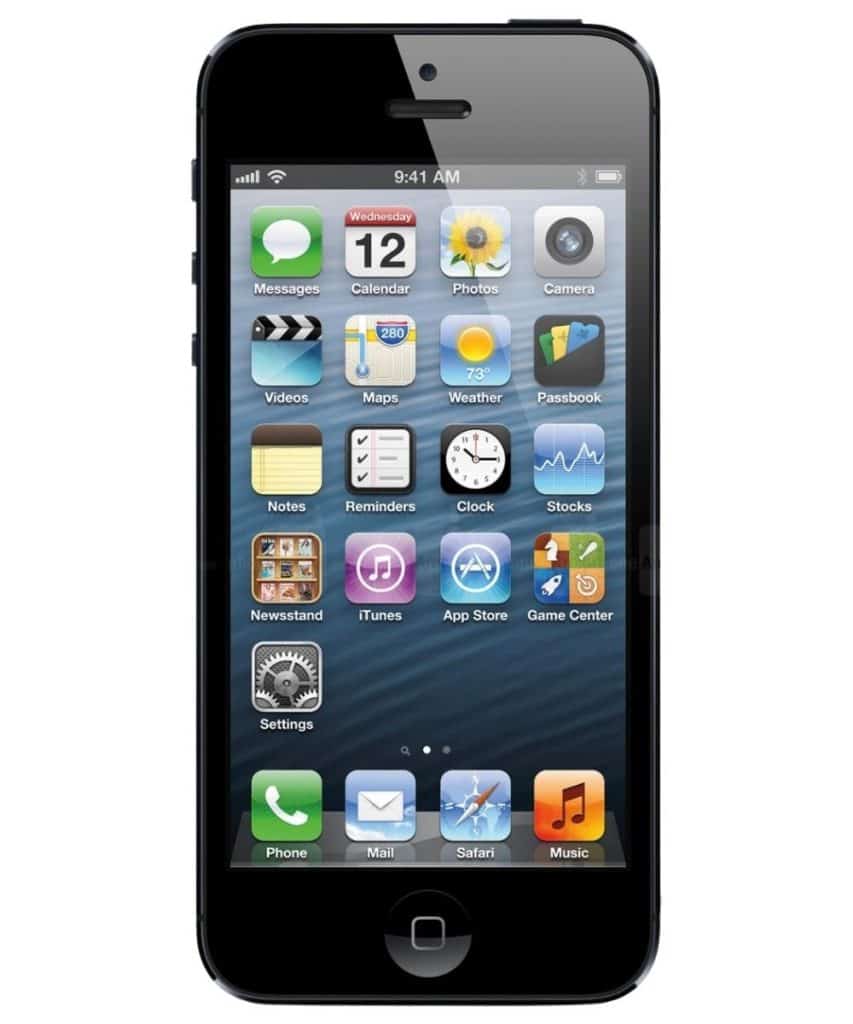
Apple sold 5 million iPhone 5s in its first week on the market. Even though the camera stayed unchanged, 1GB of storage was added. The iPhone 5 had 4G LTE connectivity! The iPhone 5 was also the first device to have Apple’s new Lightning connector. The world had not come across anything quite like this!
An 8-megapixel camera was now standard on Apple’s latest smartphones, but the screen size increased on the iPhone 5 at 4-inches. The front camera also got an upgrade with 720p video recording support. Apple sold around 5 million iPhone 5’s in the first week.
Apple iPhone 5 (2012) Specs
- 4-inches (640 x 1136 pixels) display
- 8MP rear camera, 1080p video recording
- 1.2MP front camera, 720p video recording
- Dual-core 1.3 GHz Swift (ARM v7-based) SoC with 1GB RAM
- Bluetooth 4.0
- iOS 6.0, upgradable to iOS 10
- Wi-Fi: 802.11b/g/n (2.4 GHz only)
- 16GB internal storage ($649) or 32GB ($749), 64GB ($849)
iPhone 5s
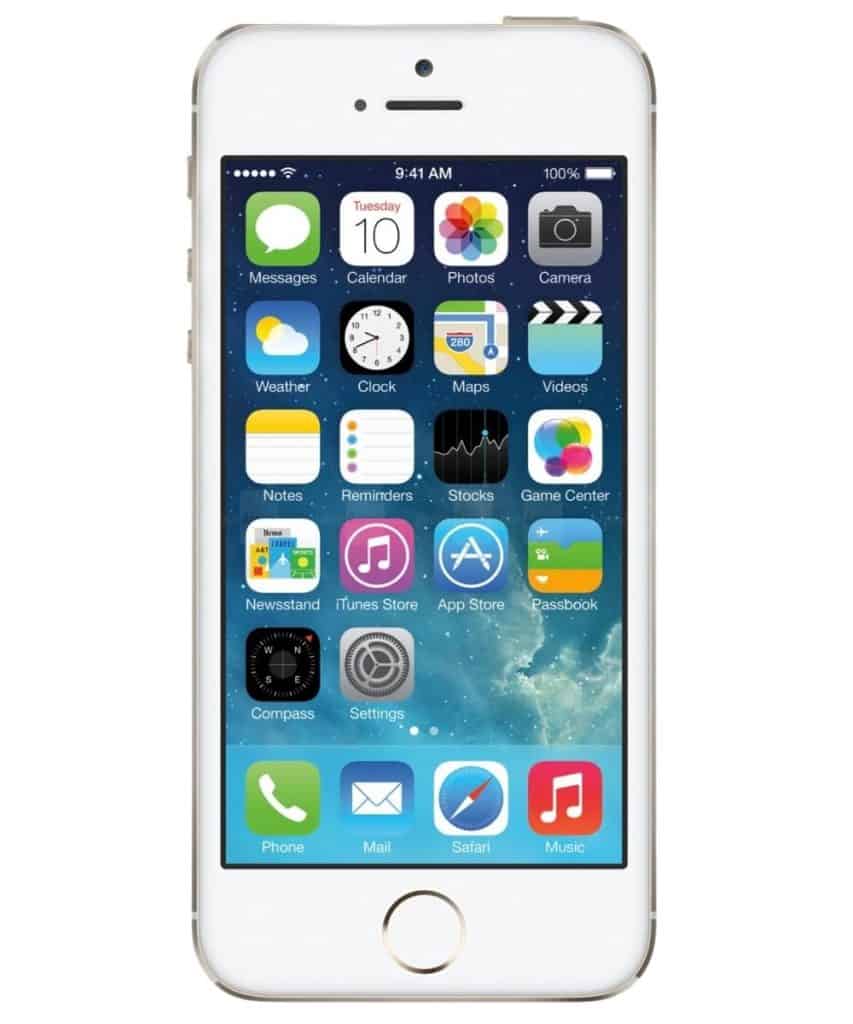
The iPhone 5s resembled the iPhone 5 and the iPhone 4s, but it was different. In terms of the most significant update, Apple swapped the conventional home button with TouchID. The introduction of TouchID has had a profound impact on the smartphone market. Apple Pay, which brought in billions in income for the company, was made possible in part by this.
Surprisingly, the iPhone 5s seemed to be a bit drab at the time of launch. However, in retrospect, the iPhone 5s was one of the company’s most valuable releases to date. Apple received around 9 million pre-orders in 24 hours. The iPhone 5S was the first Apple phone with a commendable camera and fingerprint sensor.
Apple iPhone 5s (2013) Specs
- 4-inches (640 x 1136 pixels) display
- 8MP rear camera, 1080p video recording/slow-mo
- 1.2MP front camera, 720p video recording
- Dual-core 1.3 GHz Cyclone (ARM v8-based) SoC with 1GB RAM
- Bluetooth 4.0, Touch ID
- iOS 7.0, upgradable to iOS 12
- Wi-Fi: 802.11b/g/n (2.4 GHz only)
- 16GB internal storage ($199) or 32GB ($299), 64GB ($399)
iPhone 5c
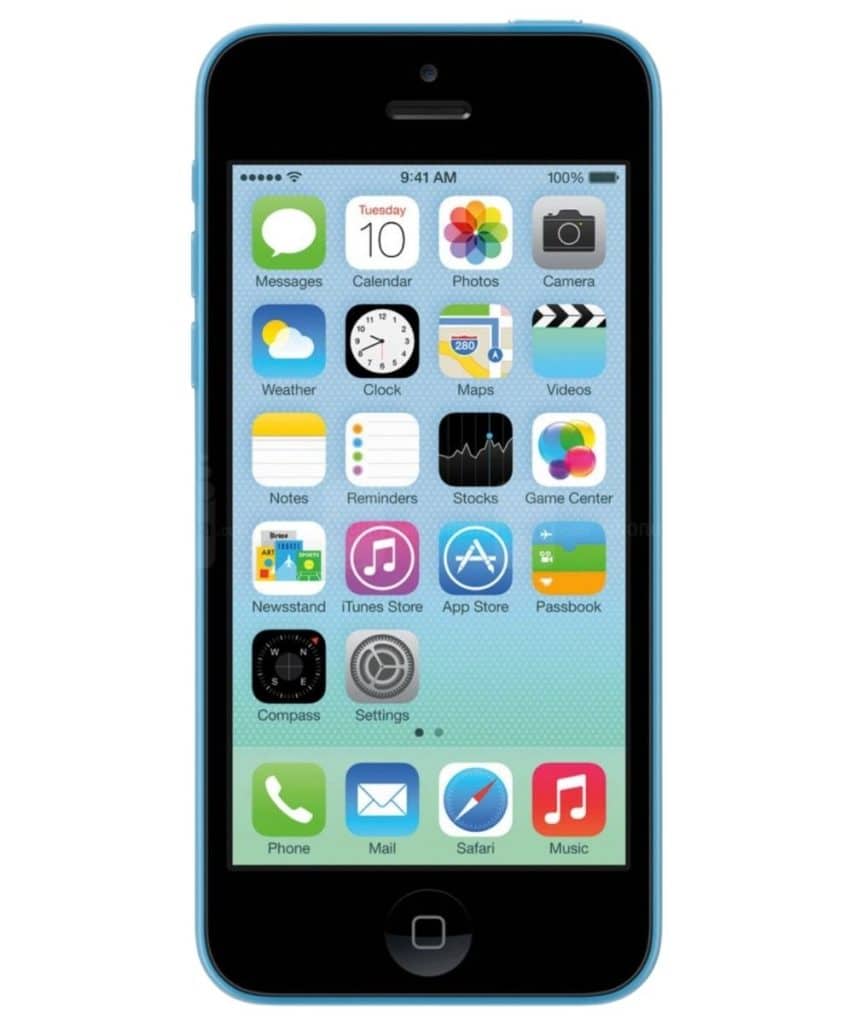
The iPhone 5s and the iPhone 5c were both released simultaneously. The iPhone 5s had TouchID, which was not present in the iPhone 5C. The iPhone 5c was just a brighter version of the previous generation’s iPhone 5. The media criticized it, but it was a huge success; you could see folks using them all around town.
So why did the iPhone 5c become a smash hit? The iPhone 5c’s popularity was because it was inexpensive for an iPhone and had a wide range of colors.
Apple iPhone 5c (2013) Specs
- 4-inches (640 x 1136 pixels) display
- 8MP rear camera, 1080p video recording
- 1.2MP front camera, 720p video recording
- Dual-core 1.3 GHz Swift (ARM v7-based) SoC with 1GB RAM
- Bluetooth 4.0
- iOS 7.0, upgradable to iOS 10
- Wi-Fi: 802.11b/g/n (2.4 GHz only)
- 16GB internal storage ($99) or 32GB ($199)
Also Read: At What Percentage Should I Charge My iPhone?
iPhone 6 and iPhone 6 Plus
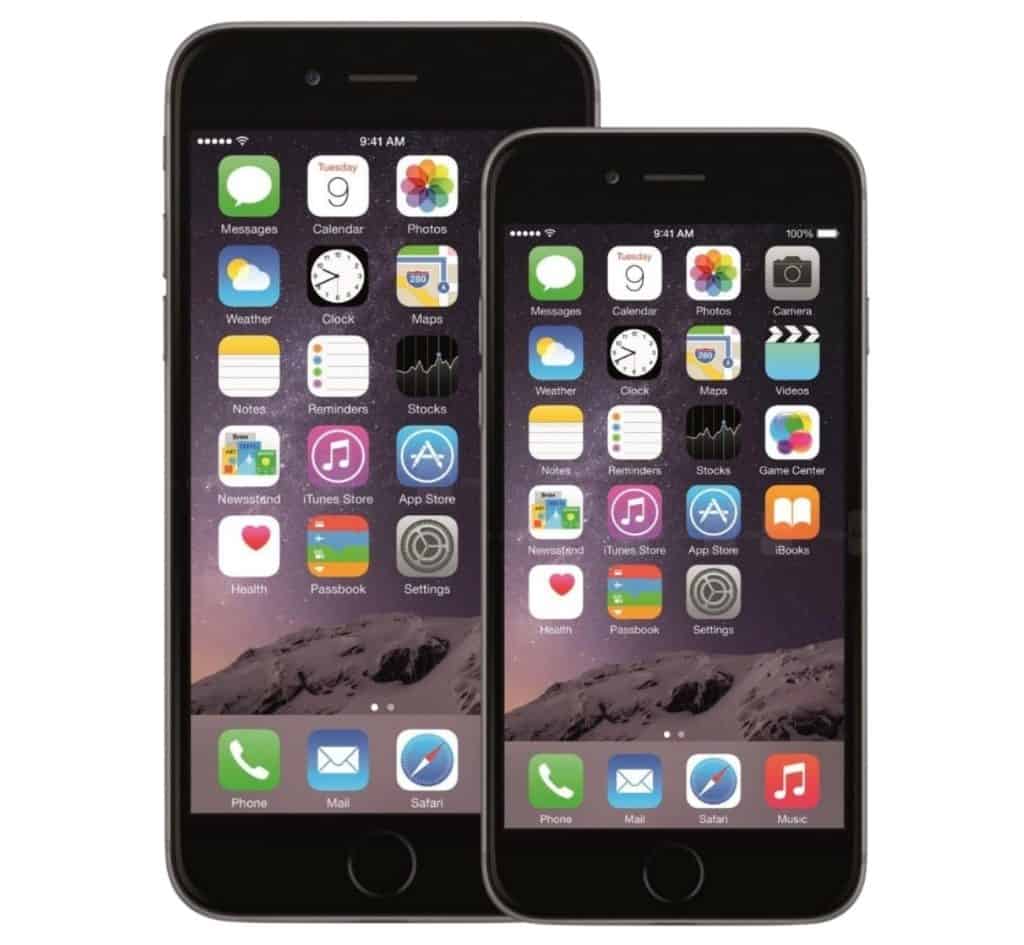
Between the original model and the S edition, Apple generally makes more significant strides than it does between the S edition and a new model. Apple’s core specifications for the iPhone 6 were almost identical to that of the iPhone 5s. The iPhone 6 and iPhone 6 Plus became notable as Apple altered its design from the iPhone 4.
The most noteworthy differences included a much larger display and an even bigger version with the iPhone 6 Plus. In addition, the Retina display went HD, and 128 Gb of internal storage became a choice for the iPhone. There was no change in RAM and megapixels on the camera. Yet Apple sold 10 million iPhone 6 & 6 Plus in the first week.
Apple iPhone 6 (2014) Specs
- 4.7-inches (750 x 1334 pixels) display
- 8MP rear camera, 1080p video recording/slow-mo
- 1.2MP front camera, 720p video recording
- Apple A8 (20 nm) SoC with 1GB RAM
- Bluetooth 4.2, Touch ID
- iOS 8.0, upgradable to iOS 12
- Wi-Fi: 802.11b/g/n
- 16GB internal storage ($199), 64GB ($299), 128GB ($399)
Apple iPhone 6 Plus (2014) Specs
- 5.5-inches (1080 x 1920 pixels) display
- 8MP rear camera, 1080p video recording/slow-mo
- 1.2MP front camera, 720p video recording
- Apple A8 (20 nm) SoC with 1GB RAM
- Bluetooth 4.2
- iOS 8.0, upgradable to iOS 12
- Wi-Fi: 802.11b/g/n
- 16GB internal storage ($299), 64GB ($399), 128GB ($499)
iPhone 6s and iPhone 6s Plus
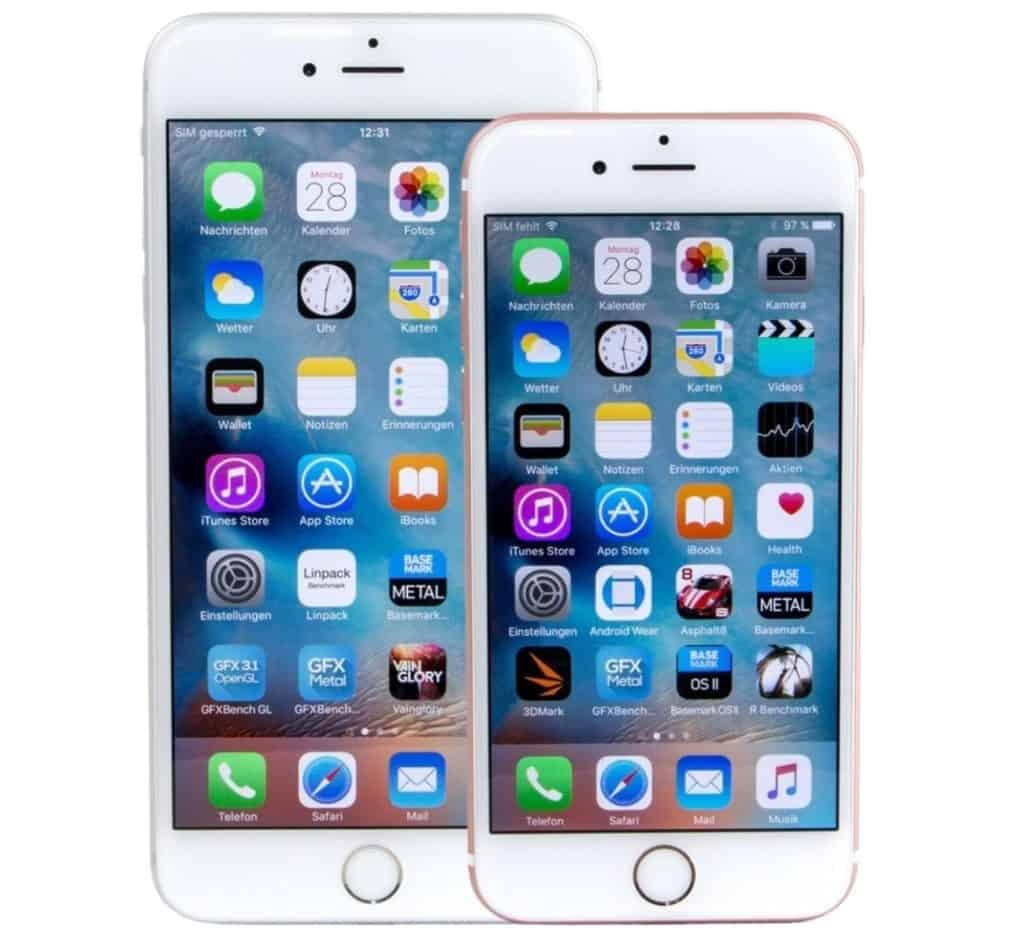
After the iPhone 6 series, the Apple iPhone 6s and iPhone 6s Plus were incremental upgrades. Their exterior design was virtually identical to their forebears, but they contained significant internal upgrades. For example, a user may “peek” inside an app and pick up a notification without opening thanks to 3D Touch, facilitating pressure-sensitive touch inputs.
The iPhone 6s series had received a significant boost in the camera department. It went from 8MP on the iPhone 6 to 12MP. The camera made a massive improvement with extra features.
Additionally, RAM was increased from 1GB to 2GB, making it twice as fast. When Apple discovered that the iPhone 6 was susceptible to bending (ahem, Bendgate!), they decided to give it 7000 series aluminum to prevent it from happening again. Finally, the 3D Touch feature was also introduced.
Apple iPhone 6s (2015) Specs
- 4.7-inches (1080 x 1920 pixels) display
- 12MP rear camera, 1080p video recording/slow-mo
- 5MP front camera, 720p video recording
- Apple A9 (14 nm) SoC with 2GB RAM
- Bluetooth 4.2
- iOS 9.0, upgradable to iOS 15
- Wi-Fi: 802.11b/g/n
- 16GB internal storage ($199), 64GB ($299), 128GB ($399)
Apple iPhone 6s Plus (2015) Specs
- 5.5-inches (1080 x 1920 pixels) display
- 12MP rear camera, 1080p video recording/slow-mo
- 5MP front camera, 720p video recording
- Apple A9 (14 nm) SoC with 2GB RAM
- Bluetooth 4.2
- iOS 9.0, upgradable to iOS 15
- Wi-Fi: 802.11b/g/n
- 16GB internal storage ($299), 64GB ($399), 128GB ($499)
iPhone SE
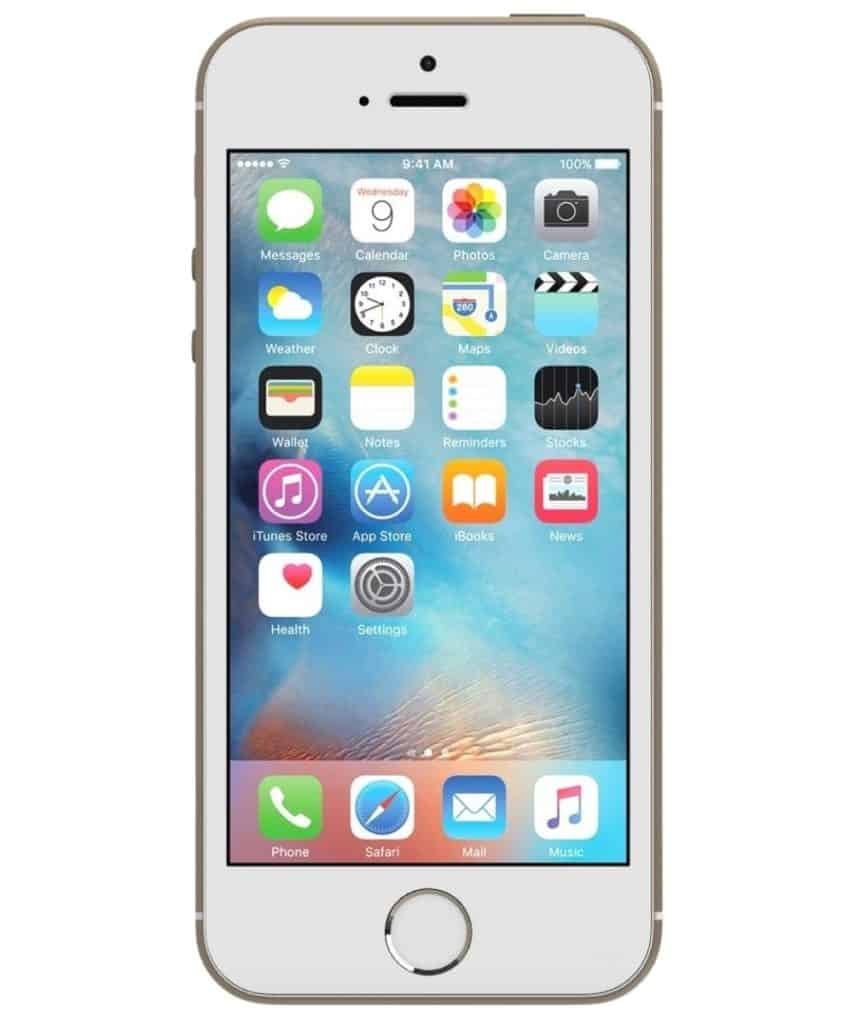
For those who desired a smaller, but equally powerful iPhone, Apple went against the grain and launched the iPhone SE to meet their needs.
The iPhone SE was a huge success. It was so popular that some users still have one, and it’s still in good working condition, although it now feels a lot smaller than it used to. Because it still functions and is continuously receiving iOS updates.
Apple iPhone SE (2016) Specs
- 4.0-inches (640 x 1136 pixels) display
- 12MP rear camera, 1080p video recording/slow-mo
- 1.2MP front camera, 720p video recording
- Apple A9 (14 nm) SoC with 2GB RAM
- Bluetooth 4.2
- iOS 9.0, upgradable to iOS 15
- Wi-Fi: 802.11b/g/n
- 16GB internal storage ($399), 64GB ($499)
iPhone 7 & iPhone 7 Plus
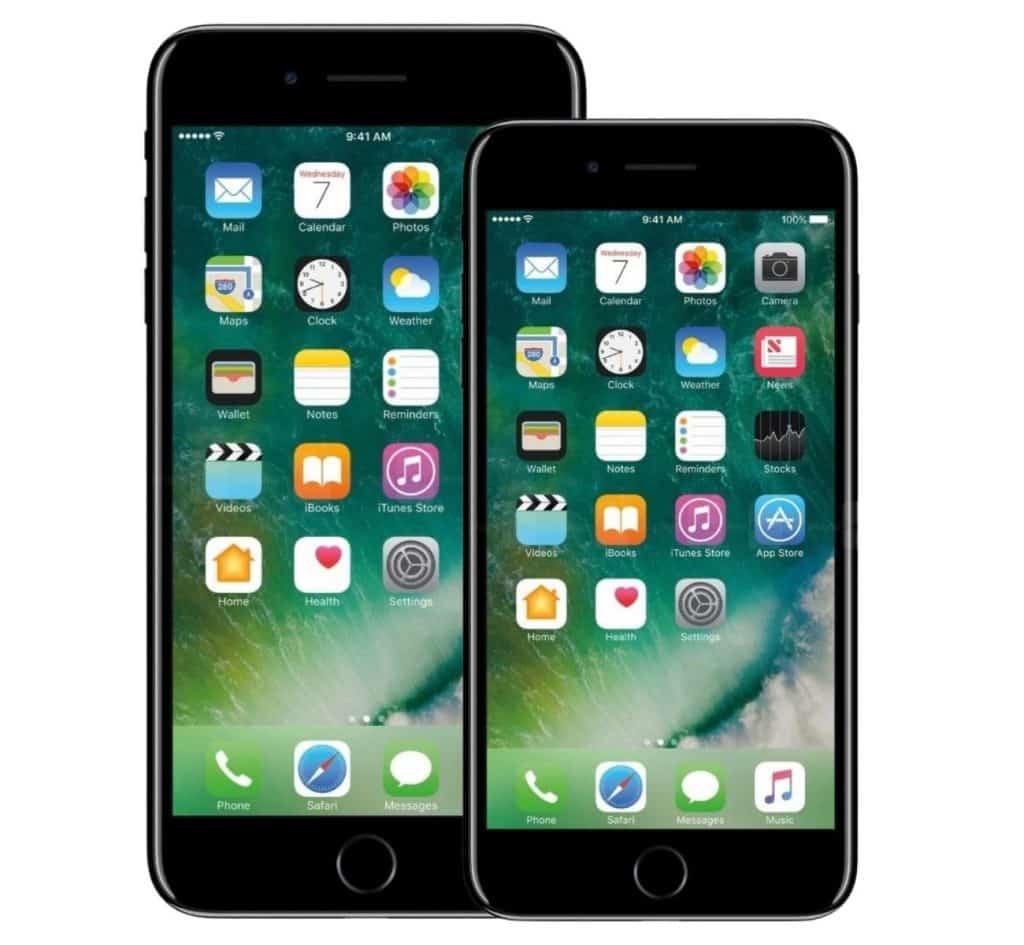
Apple no longer offered a 16 GB base model option for the iPhone 7 and iPhone 7 Plus for the first time. A sleek Jet Black color was also added to the Apple lineup. In addition, the iPhone 7 and 7 Plus offered a considerably enhanced zoom and Portrait mode with its new dual camera. This software upgrade allowed iPhone 7 Plus owners to capture amazing photographs using Depth of Field.
Apple’s decision to remove the headphone jack from the iPhone 7 and 7 Plus was contentious. The new iPhones came packaged with Lightning-compatible EarPods and an adaptor for conventional headphones. Around the same event that it revealed the headphone jack’s demise, Apple unveiled its new wireless AirPods.
Apple iPhone 7 (2016) Specs
- 4.7-inches (750 x 1334 pixels) display
- 12MP rear camera, 1080p/4K video recording/slow-mo
- 7MP front camera, 720p video recording
- Apple A10 Fusion SoC with 2GB RAM
- Bluetooth 4.2
- iOS 10, upgradable to iOS 15
- Wi-Fi: 802.11a/b/g/n/ac with MIMO
- 32GB internal storage ($649), 128GB ($749), 256GB ($849)
Apple iPhone 7 Plus (2016) Specs
- 5.5-inches (1080 x 1920 pixels) display
- 12MP+12MP dual rear camera, 1080p/4K video recording/slow-mo
- 7MP front camera, 720p video recording
- Apple A10 Fusion SoC with 3GB RAM
- Bluetooth 4.2
- iOS 10, upgradable to iOS 15
- Wi-Fi: 802.11a/b/g/n/ac with MIMO
- 32GB internal storage ($769), 128GB ($869), 256GB ($969)
iPhone 8 & iPhone 8 Plus
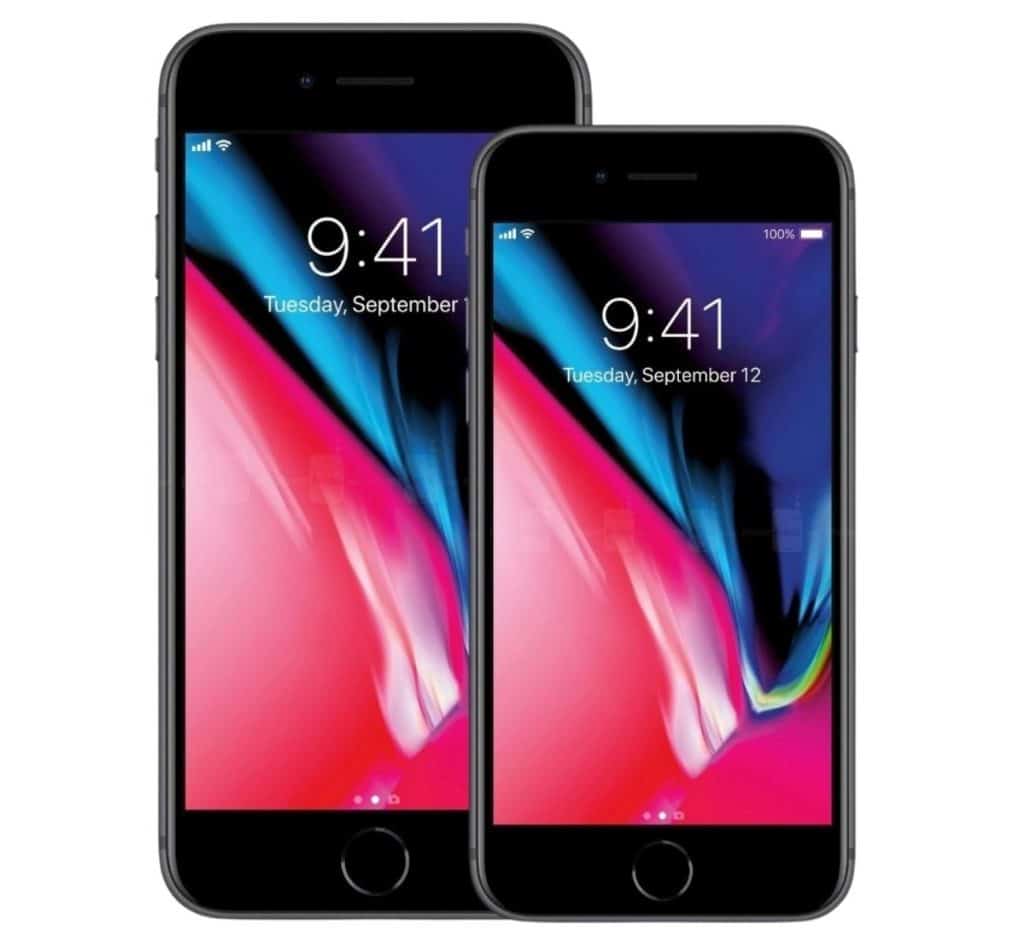
Aside from a few minor tweaks here and there, the iPhone 8 and iPhone 8 Plus were lackluster debuts. Wireless charging, a somewhat mightier CPU, and enhanced displays courtesy of Apple’s True Tone technology enabled these phones to playback HDR10 and Dolby Vision content even though they didn’t have HDR-ready panels.
The glass backs of the iPhone 8 series were another change made by Apple. After launching the iPhone 8 and iPhone 8 Plus, the devices became extremely popular. Apple maintained both models in production until 2020 since they were seen as the company’s “affordable” iPhones and did well in the market.
Apple iPhone 8 (2017) Specs
- 4.7-inches (750 x 1334 pixels) display
- 12MP rear camera, 1080p/4K video recording/slow-mo
- 7MP front camera, 720p video recording
- Apple A11 Bionic SoC with 2GB RAM
- Bluetooth 4.2
- iOS 11, upgradable to iOS 15
- Wi-Fi: 802.11a/b/g/n/ac with MIMO
- 64GB internal storage ($699), 256GB ($849)
Apple iPhone 8 Plus (2017) Specs
- 5.5-inches (1080 x 1920 pixels) display
- 12MP+12MP dual rear camera, 1080p/4K video recording/slow-mo
- 7MP front camera, 720p video recording
- Apple A11 Bionic SoC with 3GB RAM
- Bluetooth 4.2
- iOS 11, upgradable to iOS 15
- Wi-Fi: 802.11a/b/g/n/ac with MIMO
- 64GB internal storage ($799), 256GB ($949)
iPhone X
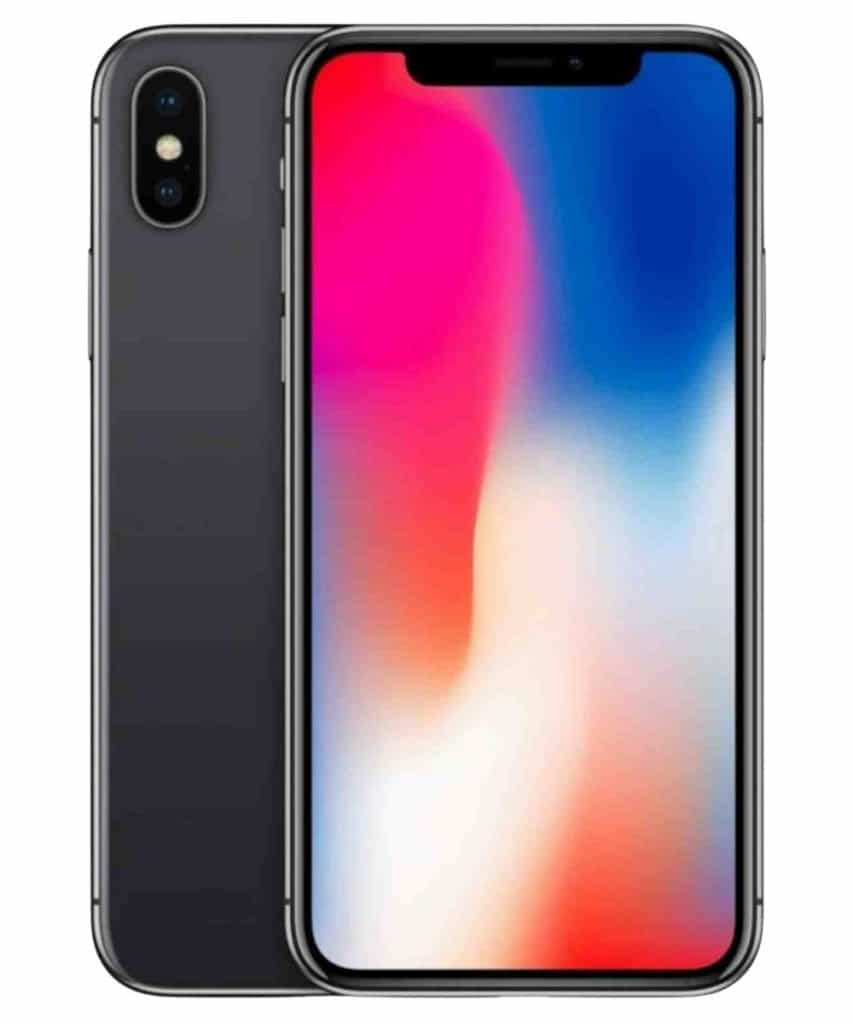
Apple had a massive celebration planned for the 10th anniversary of the iPhone, and the iPhone X fit the bill perfectly. The iPhone X’s uncertainty was intense before its release, with numerous leaks predicting a whole new iPhone. What was leaked was correct. In more ways than one, Apple’s iPhone X marked a departure from the design of previous models.
Display panels on the iPhone X were OLED for the first time. It was also the first iPhone to retail at more than $1,000 and the first iPhone to be released with no Home button. Apple introduced Face ID, a new facial-recognition technology instead. According to Apple, the iPhone X was an enormously significant upgrade, and it put in motion iPhone design developments.
Apple iPhone X (2017) Specs
- 5.8-inches (1125 x 2436 pixels) display
- 12MP+12MP dual rear camera, 1080p/4K video recording/slow-mo
- 7MP front camera, 720p video recording
- Apple A11 Bionic SoC with 3GB RAM
- Bluetooth 5.0
- iOS 11, upgradable to iOS 15
- Wi-Fi: 802.11a/b/g/n/ac with MIMO
- 64GB internal storage ($999), 256GB ($1149)
iPhone XS and iPhone XS Max
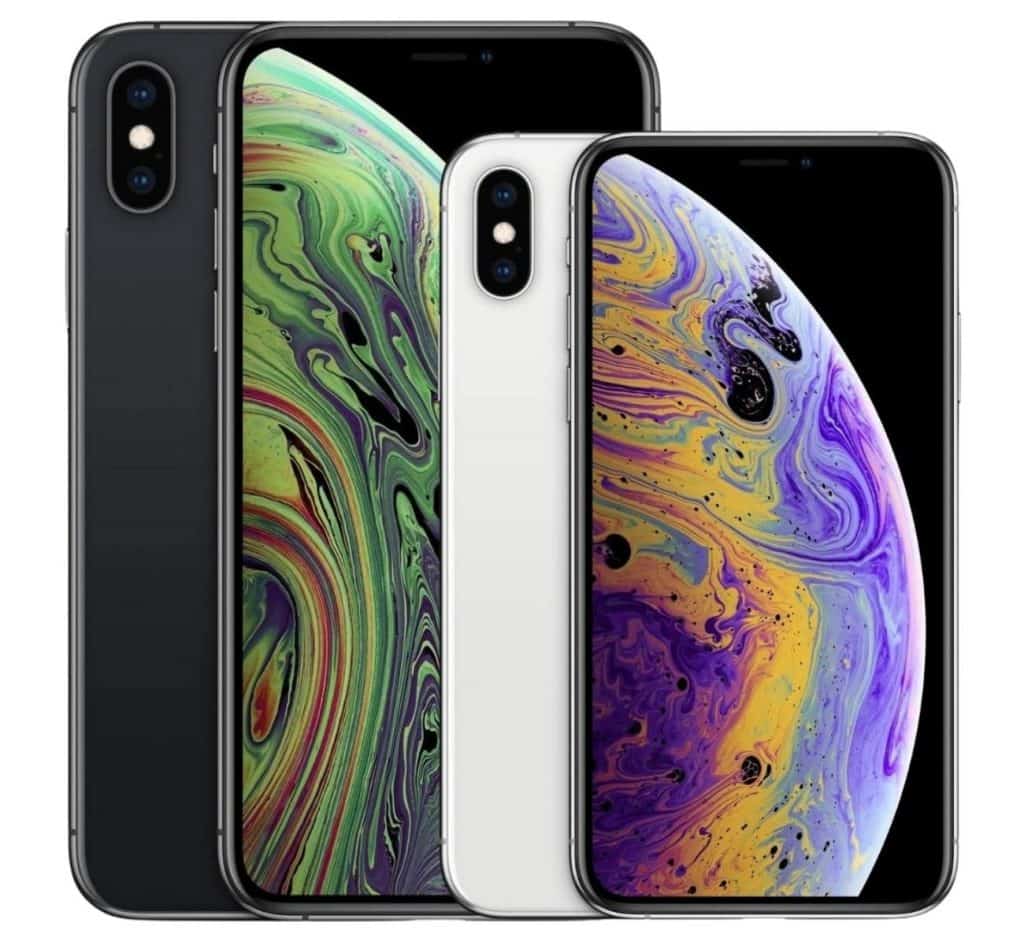
Both the iPhone XS and the iPhone XS Max included OLED screens and the A12 Bionic processor from Apple. Despite the larger screen (6.4 inches vs. 5.8 inches on the XS) and bigger battery on the iPhone XS Max, the device’s core components, such as the cameras, remained the same on both models.
For selfies, both models sported a front-facing camera for taking portraits. Edge-to-edge screens with the Super Retina HD display made everything appear fantastic. The A12 Bionic chip enhanced processing power while reducing battery consumption, making it the most significant update.
There were generally positive reviews for both new models of the iPhone, but many critics were disappointed that Apple didn’t change the design.
Apple iPhone XS (2018) Specs
- 5.8-inches (1125 x 2436 pixels) display
- 12MP + 12MP dual rear camera, 1080p/4K video recording/slow-mo
- 7MP front camera, 720p video recording
- Apple A12 Bionic SoC with 4GB RAM
- Bluetooth 5.0
- iOS 12, upgradable to iOS 15
- Wi-Fi: 802.11a/b/g/n/ac with MIMO
- 64GB internal storage ($999), 512GB ($1349)
Apple iPhone XS Max (2018) Specs
- 6.4-inches (1242 x 2688 pixels) display
- 12MP + 12MP dual rear camera, 1080p/4K video recording/slow-mo
- 7MP front camera, 720p video recording
- Apple A12 Bionic SoC with 4GB RAM
- Bluetooth 5.0
- iOS 12, upgradable to iOS 15
- Wi-Fi: 802.11a/b/g/n/ac with MIMO
- 64GB internal storage ($1099), 512GB ($1449)
iPhone XR
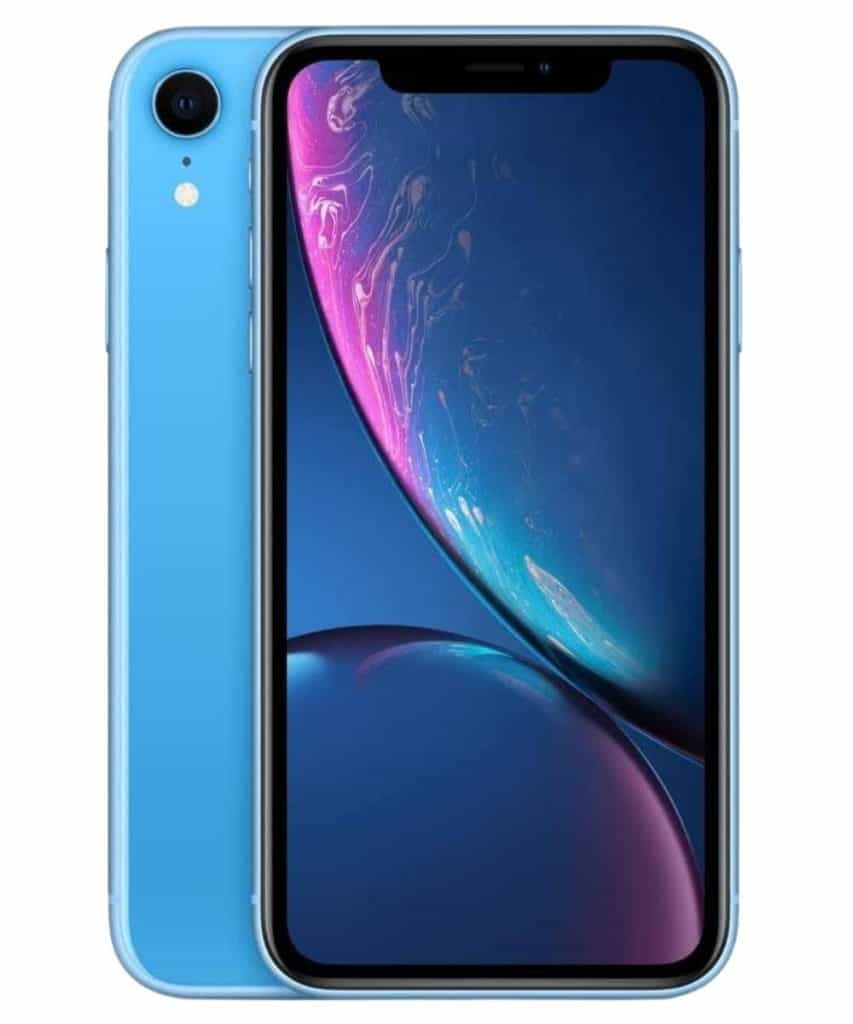
The iPhone XR was a huge success thanks to its low pricing, beautiful colors, and the A12 Bionic CPU, making it a smartphone’s powerhouse. Compared to the iPhone X, the iPhone XR had a 6.1-inch screen, but it didn’t lack an OLED display.
All in all, the iPhone XR was Apple’s most profitable release of the iPhone X period, which also comprised the iPhone X and the iPhone XS/XS Max models. In both 2018 and 2019, it was among the best-selling smartphones from the brand.
Apple iPhone XR (2018) Specs
- 6.0-inches (1125 x 2436 pixels) display
- 12MP rear camera, 1080p/4K video recording/slow-mo
- 7MP front camera, 720p video recording
- Apple A12 Bionic SoC with 3GB RAM
- Bluetooth 5.0
- iOS 12, upgradable to iOS 15
- Wi-Fi: 802.11a/b/g/n/ac with MIMO
- 64GB internal storage ($749), 256GB ($899)
iPhone 11
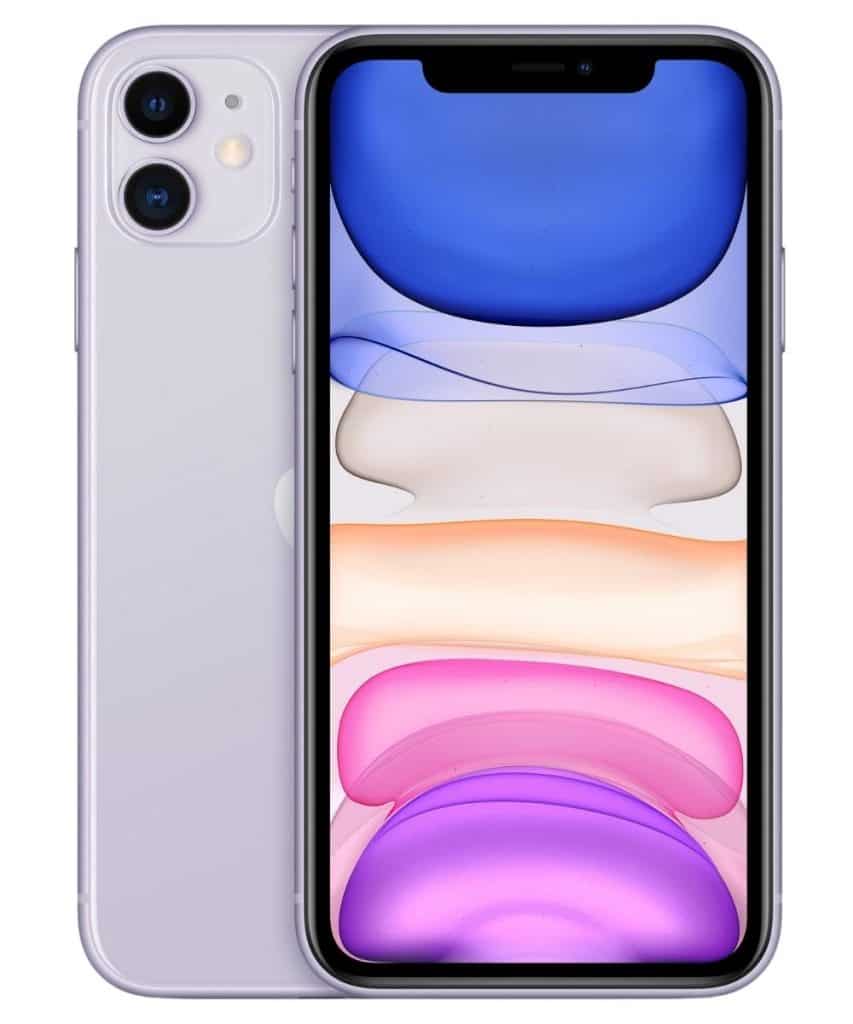
Despite its low price, the iPhone 11 offers several new features to be a contender for the year’s most coveted smartphone. In addition to the 6.1-inch Liquid Retina display, there are six vibrant color options for the smartphone—both 12MP cameras on the rear offer wide and ultra-wide lenses.
Apple iPhone 11 (2019) Specs
- 6.1-inches (828 x 1792 pixels) display
- 12MP + 12MP dual rear camera, 1080p/4K video recording/slow-mo
- 12MP front camera, 720p video recording
- Apple A13 Bionic SoC with 4GB RAM
- Bluetooth 5.0
- iOS 13, upgradable to iOS 15
- Wi-Fi: 802.11a/b/g/n/ac with MIMO
- 64GB internal storage ($699), 128GB ($749)
iPhone 11 Pro
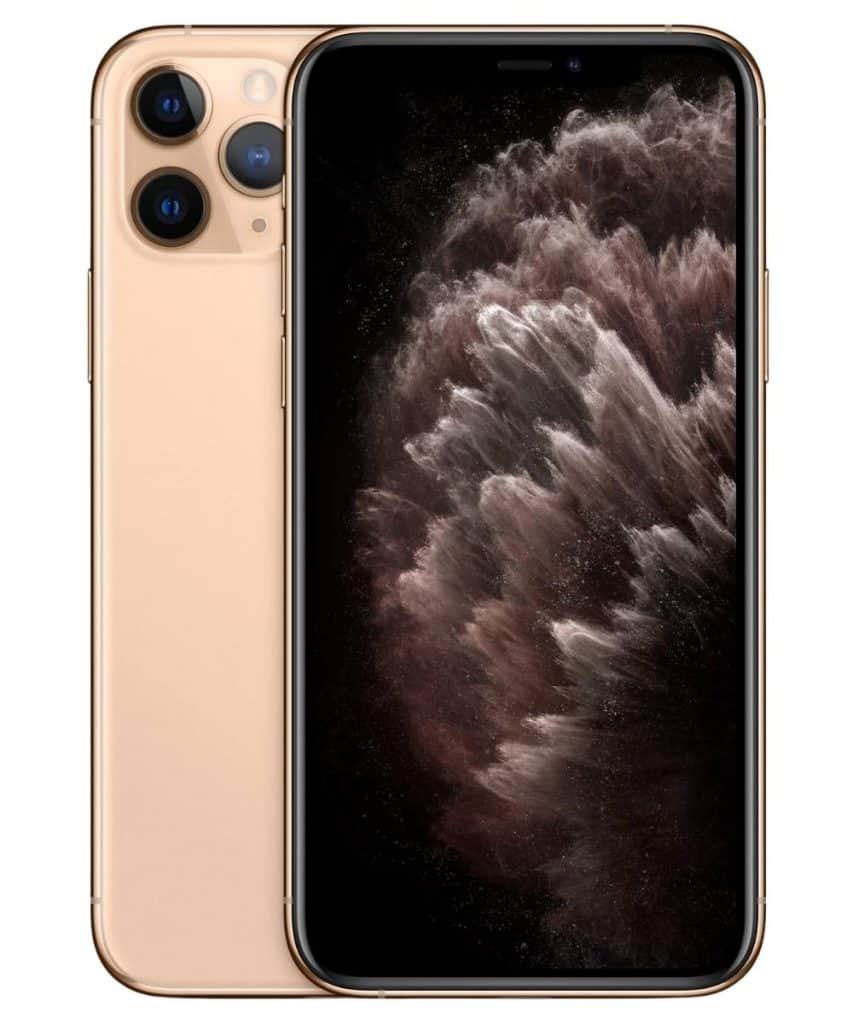
The iPhone 11 Pro was a fantastic fit for Apple customers wanting a smaller iPhone with a high-quality display. When it came to display quality, Apple’s 5.8-inch Super Retina XDR display was the best to date. This phone had three 12MP HDR cameras, one for wide, one for ultra-wide, and one for telephoto, all of which could take HDR photos. There were fewer color possibilities than the iPhone 11, but a dazzling case has always been possible!
Apple iPhone 11 Pro (2019) Specs
- 5.8-inches (1125 x 2436 pixels) display
- 12MP + 12MP + 12MP triple rear camera, 1080p/4K video recording/slow-mo
- 12MP front camera, 720p video recording
- Apple A13 Bionic SoC with 4GB RAM
- Bluetooth 5.0
- iOS 13, upgradable to iOS 15
- Wi-Fi: 802.11a/b/g/n/ac with MIMO
- 64GB internal storage ($999), 512GB ($1349)
iPhone 11 Pro Max
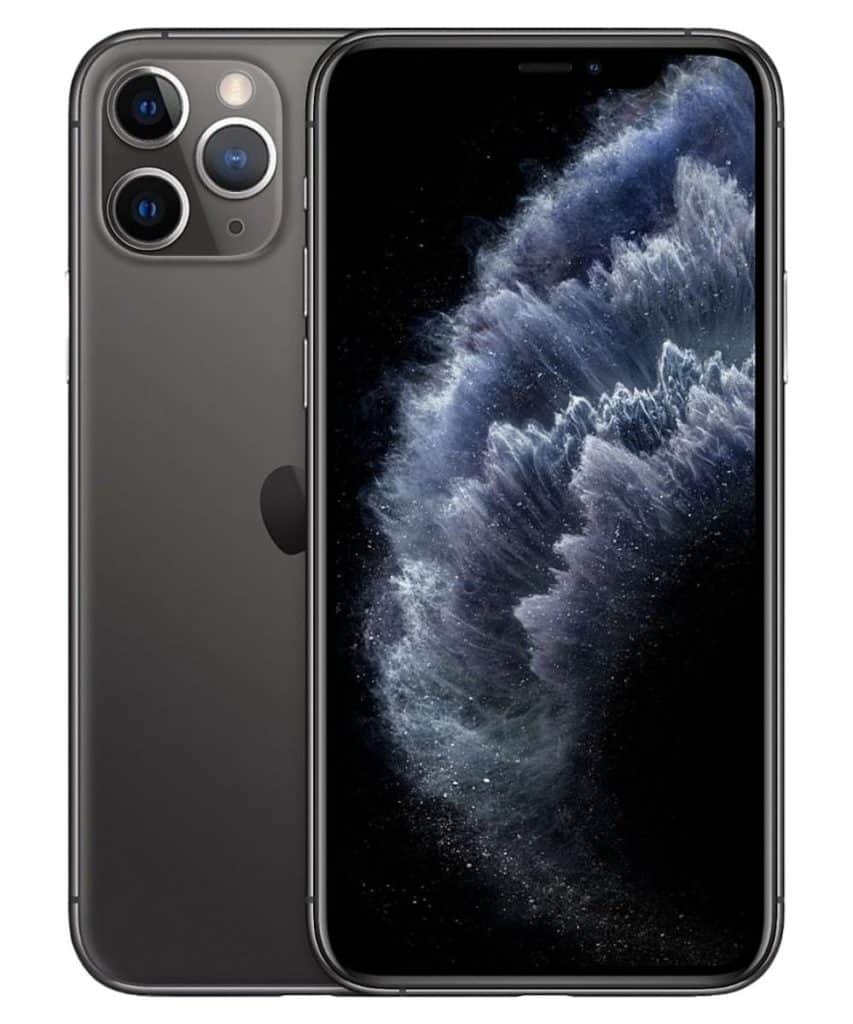
In 2019, Apple released the iPhone 11 Pro Max, its biggest and most costly smartphone. As with the iPhone 11 Pro, the display was a 6.5-inch version of Apple’s Super Retina XDR display. The only difference between the Pro Max and the 11 Pro was the screen size. Both iPhones included a three-lens camera configuration and identical color options.
Apple iPhone 11 Pro Max (2019) Specs
- 6.4-inches (1242 x 2688 pixels) display
- 12MP + 12MP + 12MP triple rear camera, 1080p/4K video recording/slow-mo
- 12MP front camera, 720p video recording
- Apple A13 Bionic SoC with 4GB RAM
- Bluetooth 5.0
- iOS 13, upgradable to iOS 15
- Wi-Fi: 802.11a/b/g/n/ac with MIMO
- 64GB internal storage ($1099), 512GB ($1449)
iPhone SE (2020)
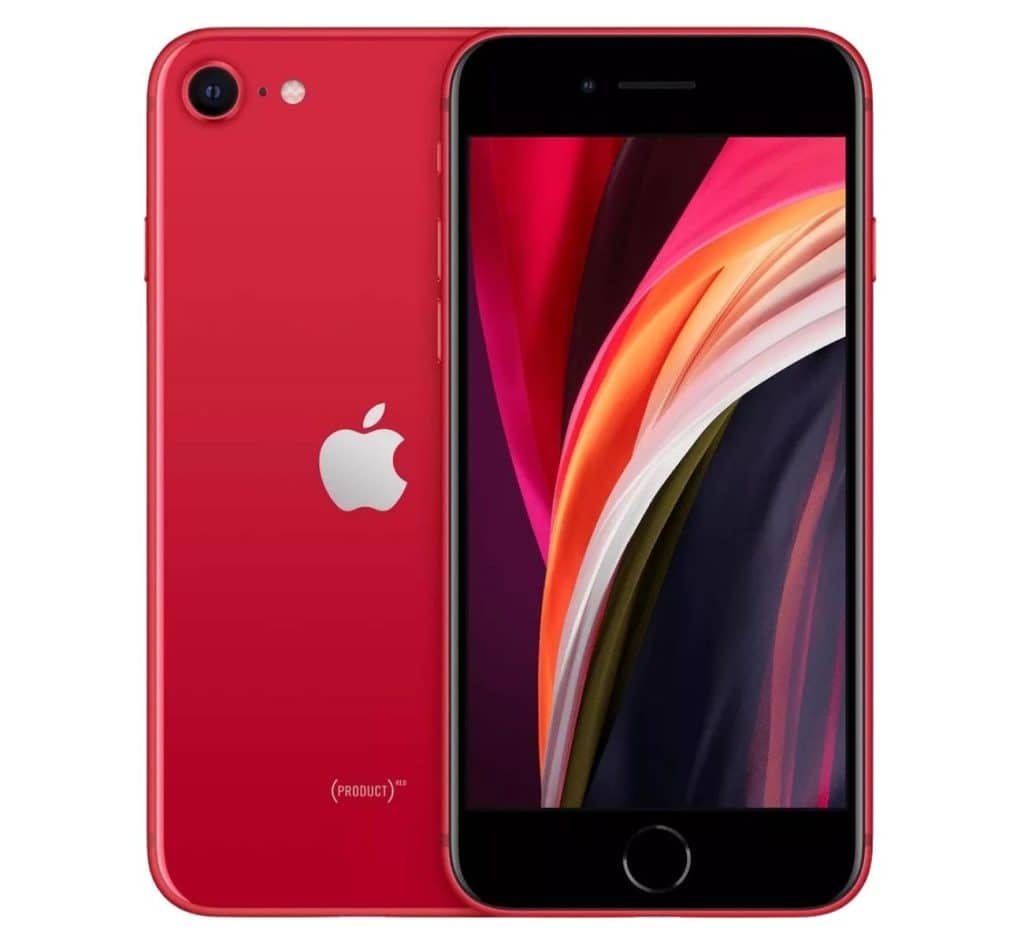
It is the second generation of the SE model, which has been well received by people who desire a more compact iPhone. This is a throwback model for those of us who grew up with a classic iPhone. Retina HD screen and Touch ID Home button pay homage to the first iPhone SE at a comparable price.
The second-generation SE has many of the same features as Apple’s more costly iPhones, including the A13 Bionic chip, a sophisticated camera setup with Portrait Mode and Depth Control along with wireless charging, and a better battery life.
Apple iPhone SE (2020) Specs
- 4.7-inches (750 x 1334 pixels) display
- 12MP rear camera (wide), 1080p/4K video recording/slow-mo
- 12MP front camera, 720p video recording
- Apple A13 Bionic SoC with 4GB RAM
- Bluetooth 5.0
- iOS 13, upgradable to iOS 15
- Wi-Fi: 802.11ax Wi-Fi 6 with 2×2 MIMO
- 64GB internal storage ($399), 128GB ($449)
iPhone 12 Mini
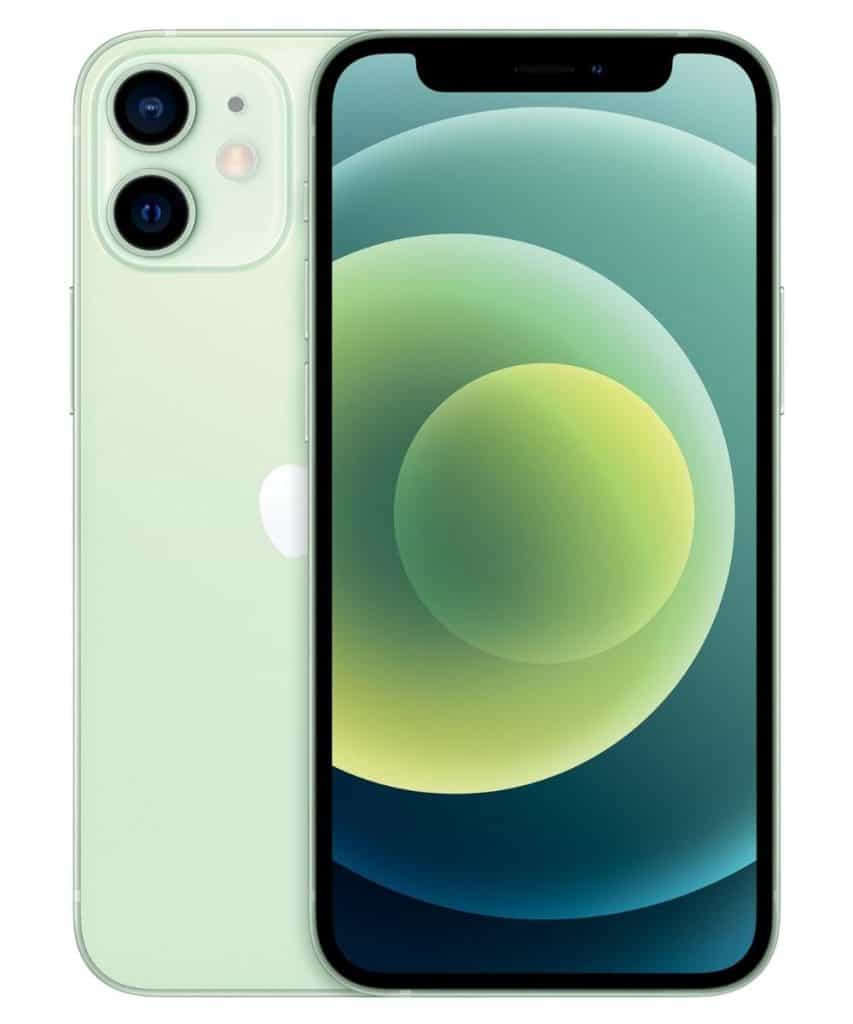
For the first time in years, Apple has produced a smaller iPhone. The iPhone 12 Mini is a full-featured iPhone with the same specs as the bigger iPhone 12, albeit smaller than the iPhone SE 2020 model.
An OLED screen, 5G connectivity, and Apple’s A14 processor are all included in the 5.4-inch model. The iPhone 12 Mini is essentially a smaller version of the iPhone 12.
As a result, if you want a smaller iPhone, you don’t have to compromise on the quality of the hardware and specifications. The big and the mini iPhone 12 are equal except for the battery and screen size.
Apple iPhone 12 Mini (2020) Specs
- 5.4-inches (1080 x 2340 pixels) display
- 12MP rear camera (wide), 1080p/4K video recording/slow-mo
- 12MP front camera, 720p video recording
- Apple A14 Bionic SoC with 4GB RAM
- Bluetooth 5.0
- iOS 13, upgradable to iOS 15
- Wi-Fi: 802.11ax Wi-Fi 6 with 2×2 MIMO, 5G
- 64GB internal storage ($599), 256GB ($749)
Also Read: iPhone Connected To WiFi But No Internet? (How To Fix)
iPhone 12
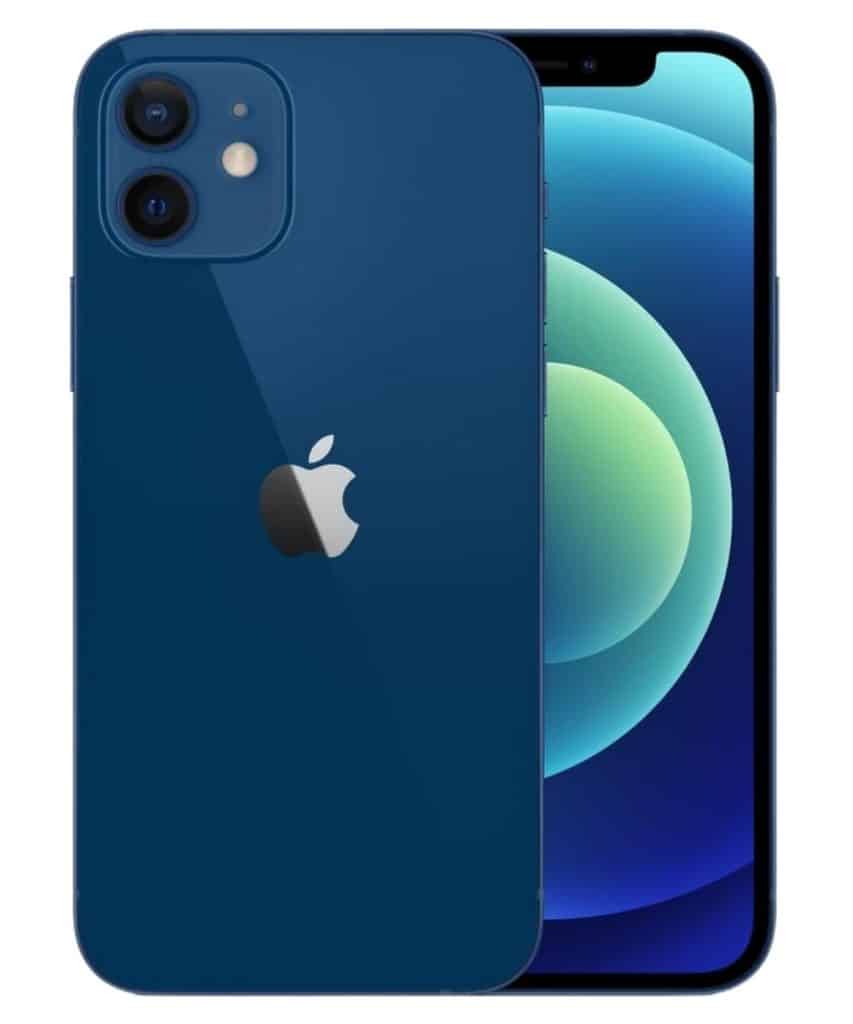
The iPhone 12 is a step up from the iPhone 11. To begin with, it features an OLED screen. And 5G as well.
Apple made a few minor changes to the look of the iPhone 12 series. Everything has been redesigned to look like an iPhone 4 or iPhone 4s, with a squared-off side appearance. This creates a more compact package from top to bottom.
The iPhone 12 boasts a 6.1-inch screen powered by the A14 processor. Apple has improved the sensors on the dual-lens cameras to perform better in low-light surroundings.
When compared to an iPhone 11 or newer, the iPhone 12 isn’t a significant upgrade, but for those who are using an iPhone X or earlier, the switch to the newer model will feel like a major jump because of the newer model’s increased speed and performance, improved screen, and ability to support 5G.
Apple iPhone 12 (2020) Specs
- 6.1-inches (1170 x 2532 pixels) display
- 12MP+12MP dual rear camera (wide), 1080p/4K video recording/slow-mo
- 12MP front camera, 720p video recording
- Apple A14 Bionic SoC with 4GB RAM
- Bluetooth 5.0
- iOS 15
- Wi-Fi: 802.11ax Wi-Fi 6 with 2×2 MIMO, 5G
- 64GB internal storage ($906)
iPhone 12 Pro
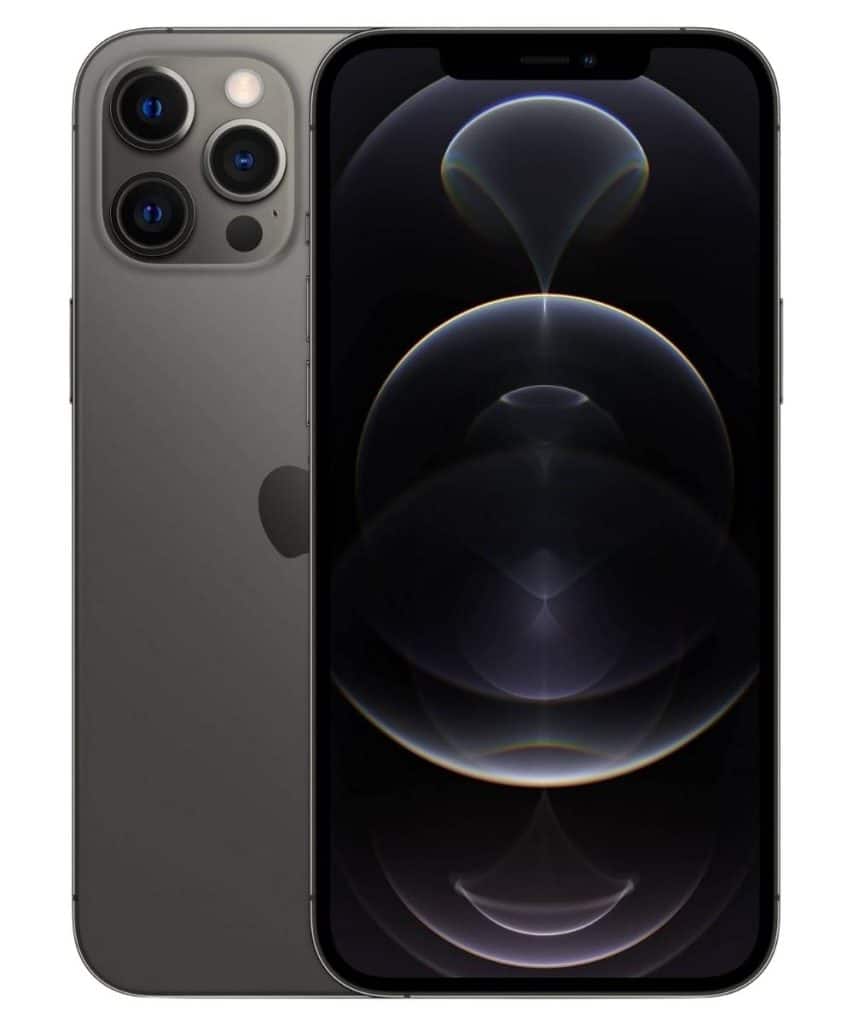
There are some notable camera and color changes on the iPhone 12 Pro, but it still features the same 6.1-inch display size as iPhone 12 and retains most features found on lower-priced models. A triple-lens configuration like the iPhone 11 Pro models, except LiDAR scanning, superior Night Mode, and better zoom range and lens capabilities. Professional editors liked Apple’s addition of RAW pictures and the inclusion of Dolby Vision, which can capture 60 frames per second in the Pro versions.
Apple iPhone 12 Pro (2020) Specs
- 6.1-inches (1170 x 2532 pixels) display
- 12MP+12MP dual rear camera (wide), 1080p/4K video recording/slow-mo
- 12MP front camera, 720p video recording
- Apple A14 Bionic SoC with 4GB RAM
- Bluetooth 5.0
- iOS 15
- Wi-Fi: 802.11ax Wi-Fi 6 with 2×2 MIMO, 5G
- 64GB internal storage ($999)
iPhone 12 Pro Max
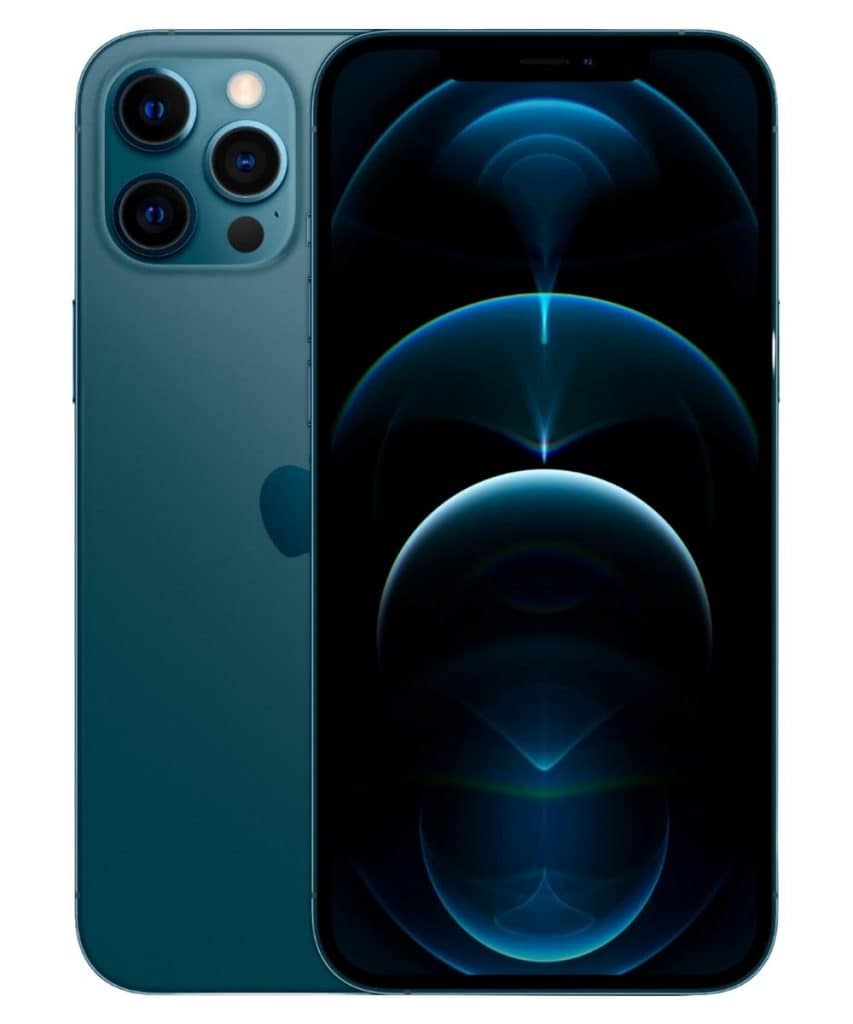
The iPhone 12 Pro Max comes with a 6.7-inches OLED display, making it the largest iPhone Apple has ever released. The internal specs are nearly identical to the iPhone 12 Pro, with the same Processor, storage space, and RAM.
iPhone 12 Pro Max gets even better after its camera features and specs. It features Apple’s ToF LiDAR sensor and a large OLED display. Using a 65mm-equivalent focal length lens, the iPhone 12 Pro Max boasts 12x digital zoom plus a better optical zoom.
Apple iPhone 12 Pro Max (2020) Specs
- 6.1-inches (1284 x 2778 pixels) display
- 12MP+12MP+12MP triple rear camera (wide), 1080p/4K video recording/slow-mo
- 12MP front camera, 720p video recording
- Apple A14 Bionic SoC with 6GB RAM
- Bluetooth 5.0
- iOS 15
- Wi-Fi: 802.11ax Wi-Fi 6 with 2×2 MIMO, 5G
- 64GB internal storage ($1099)
iPhone 13
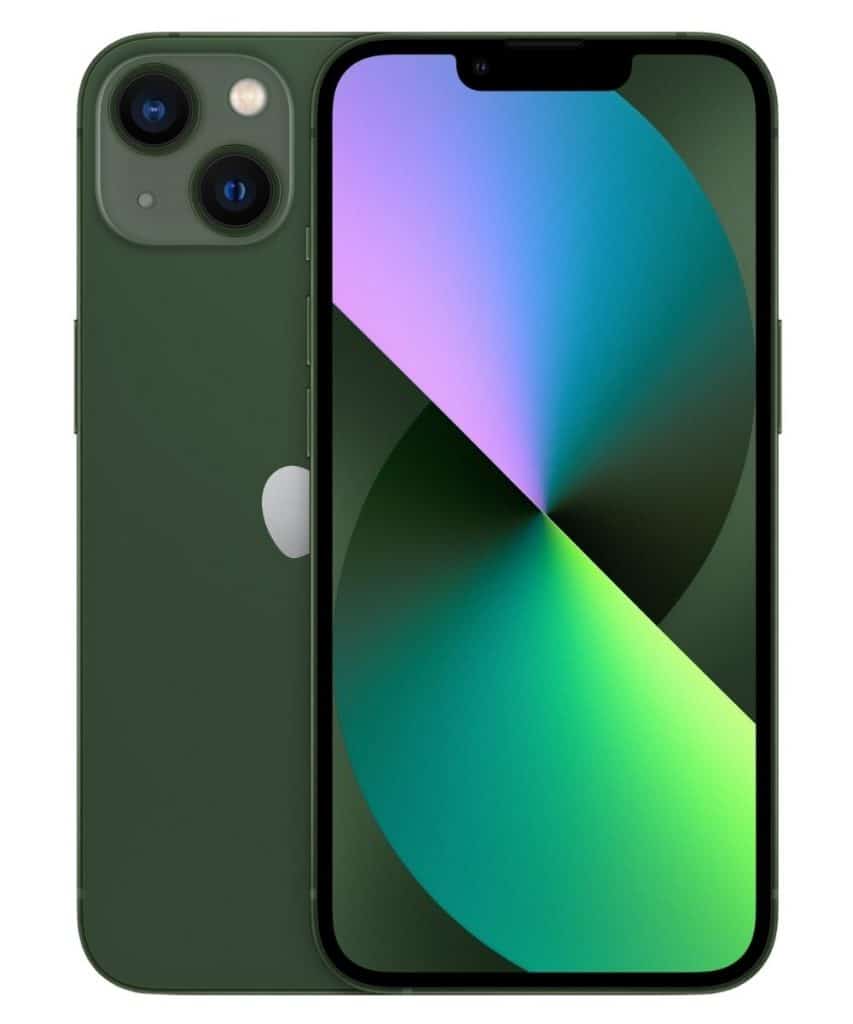
Many of the design characteristics offered in the iPhone 12 series were retained in the iPhone 13’s base model, although it has a 20% reduced bezel to fit a new camera configuration. The A15 Bionic processor marks a considerable leap over the preceding version of iPhones.
Color options for this device include Red, which was a prominent selling feature for the iPhone 13 and contributed to its success. The iPhone 13’s base model came with twice as much storage space and the same price as the iPhone 12 when it was first announced. The 6.1-inch screen size remains unchanged.
Apple iPhone 13 (2021) Specs
- 6.1-inches (1284 x 2778 pixels) display
- 12MP+12MP dual rear camera (wide), 1080p/4K video recording/slow-mo
- 12MP front camera, 720p video recording
- Apple A15 Bionic SoC with 6GB RAM
- Bluetooth 5.0
- iOS 15
- Wi-Fi: 802.11ax Wi-Fi 6 with 2×2 MIMO, 5G
- 128GB internal storage ($799)
iPhone 13 Pro
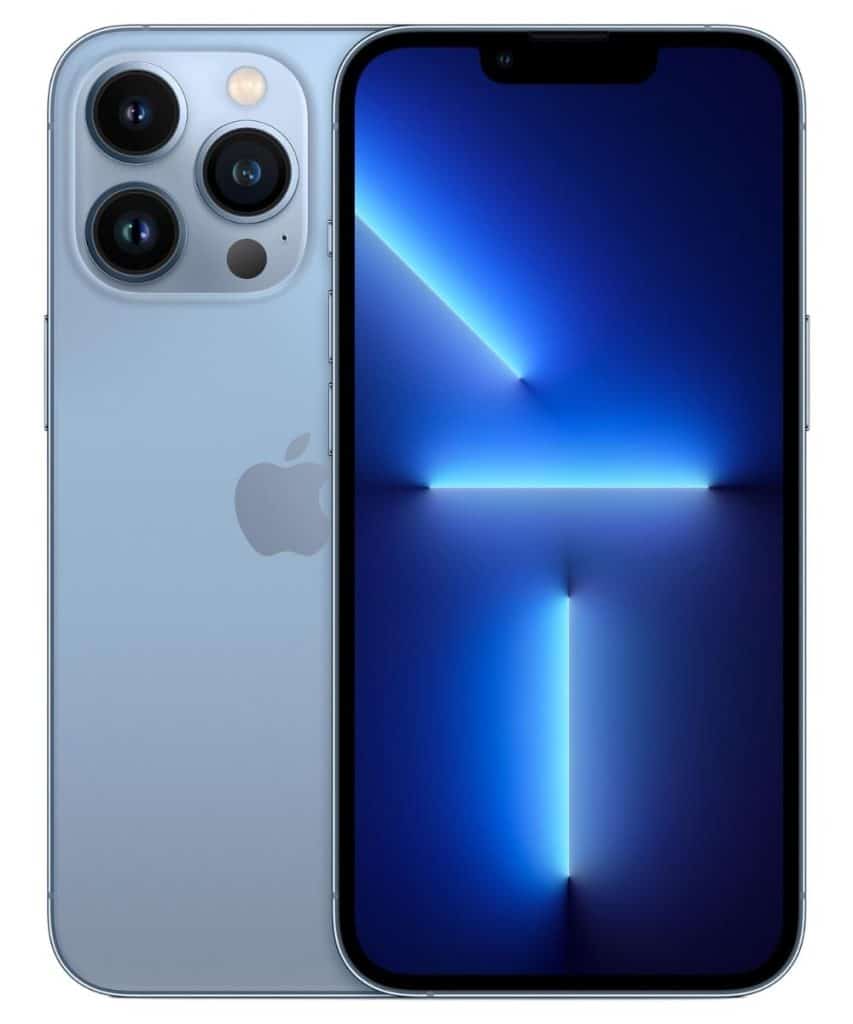
The 6.1-inch Super Retina XDR display on the iPhone 13 Pro stands with the previous models, but its camera features are what sets it apart. It has a LiDAR scanner for Night Mode and a 1 TB variant that offers maximum storage than any previous iPhone model ever. It’s a smart option, given that all the advanced camera features necessitate a large file size.
Apple iPhone 13 Pro (2021) Specs
- 6.1-inches (1284 x 2778 pixels) display
- 12MP+12MP dual rear camera (wide), 1080p/4K video recording/slow-mo
- 12MP front camera, 720p video recording
- Apple A15 Bionic SoC with 6GB RAM
- Bluetooth 5.0
- iOS 15
- Wi-Fi: 802.11ax Wi-Fi 6 with 2×2 MIMO, 5G
- 128GB internal storage ($999)
iPhone 13 Pro Max
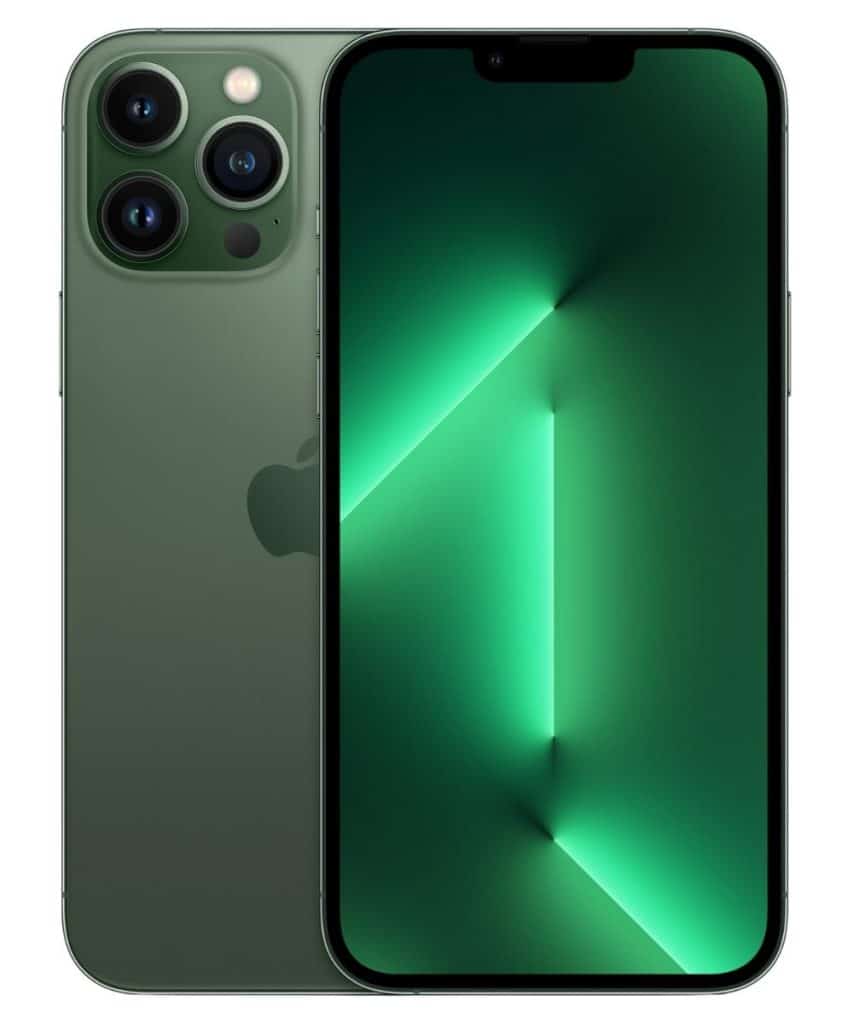
A larger version of the iPhone 13 Pro is available. It has a 6.7-inch screen like the iPhone 12 Pro Max. Despite having the exact overall dimensions as its predecessor, the iPhone 13 Pro Max is slightly thicker than its predecessor.
The iPhone 13 Pro Max gets the A15 chipset and an extra GPU. In addition, Apple claims that the battery can last up to 28 hours for continual video playback on a single charge. The iPhone Pro Max has the most expensive price tag, making it the ultimate iPhone in the lineup.
Apple iPhone 13 Max (2021) Specs
- 6.7-inches Super Retina XDR display
- 12MP+12MP+12MP triple rear camera (wide), 1080p/4K video recording/slow-mo
- 12MP front camera, 720p video recording
- Apple A15 Bionic SoC with 6GB RAM
- Bluetooth 5.0
- iOS 15
- Wi-Fi: 802.11ax Wi-Fi 6 with 2×2 MIMO, 5G
- 128GB internal storage ($1099)
iPhone 13 mini
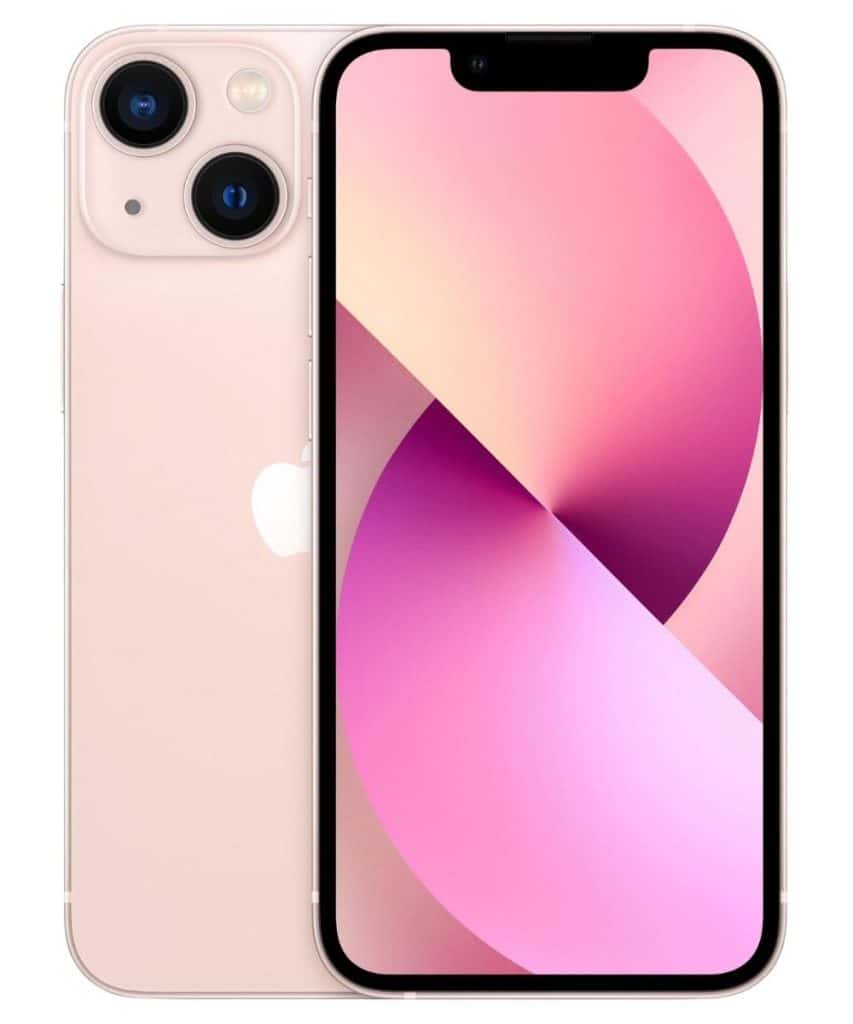
The A15 Bionic chip within the iPhone 13 mini gives it plenty of juice, just like its larger brothers. Compared to the iPhone 12 small, its battery performance has increased by up to an hour. There is 512 GB of storage available on the iPhone 13 mini, which is the highest storage ever seen on a compact model, making it one of the most storage-rich devices on the market today. The 5.4-inch screen mirrors the iPhone 12 mini in terms of design and physical dimensions.
Apple iPhone 13 mini (2021) Specs
- 5.4-inches Super Retina XDR display
- 12MP+12MP dual rear camera (wide), 1080p/4K video recording/slow-mo
- 12MP front camera, 720p video recording
- Apple A15 Bionic SoC with 6GB RAM
- Bluetooth 5.0
- iOS 15
- Wi-Fi: 802.11ax Wi-Fi 6 with 2×2 MIMO, 5G
- 128GB internal storage ($699)
Frequently Asked Questions
Now that we have tracked every iPhone model that ever debuted. Now, let’s take some other related questions about the iPhones in order.
What are the top 5 newest iPhones?
The top 5 newest iPhones are iPhone 12 Pro Max, iPhone 13 mini, iPhone 13, iPhone 13 Pro, and the iPhone 13 Pro Max.
What is the latest iPhone model in order?
The latest iPhone model as of December 2021 is the iPhone 13 Pro Max. It is the top-end model in the series.
Conclusion
We hope this guide helps you track iPhones in order and get you all the information you need. If you have further questions on how Apple’s phone lineup has evolved, let us know in the comments. We’ll be updating this list for years to come, starting with the upcoming iPhone 14 and going all the way up to a possible iPhone 20 in 5 years and beyond.